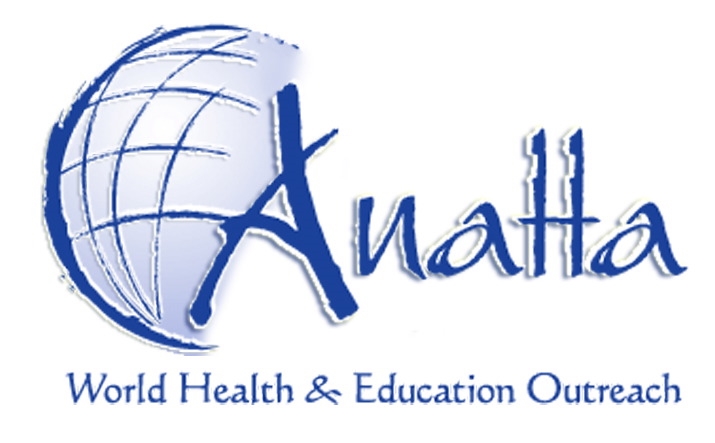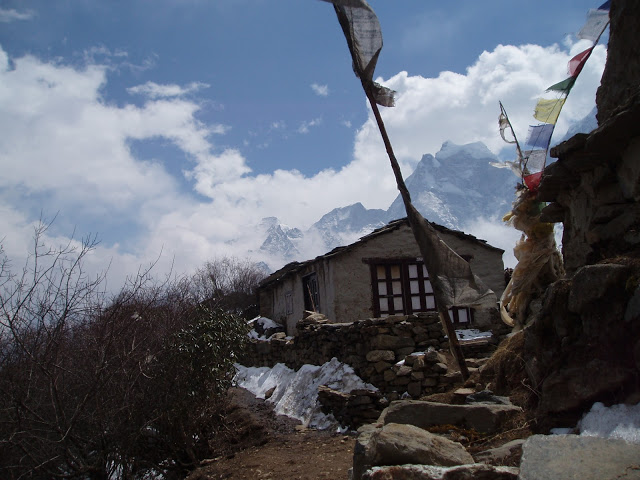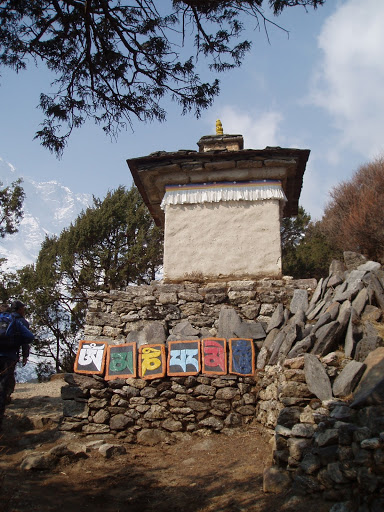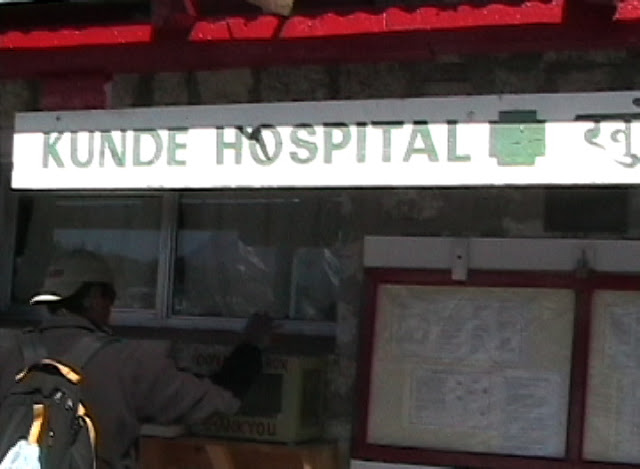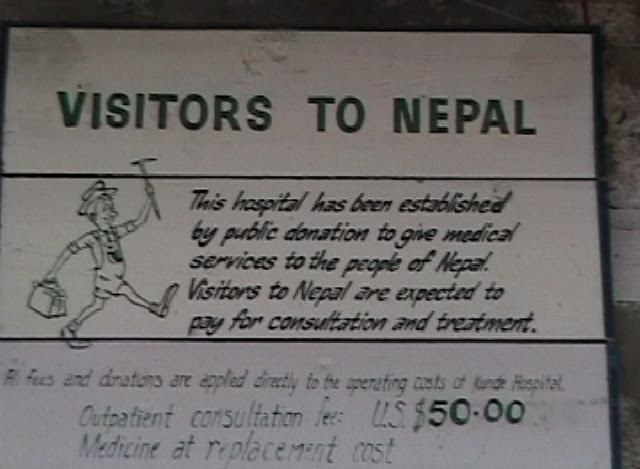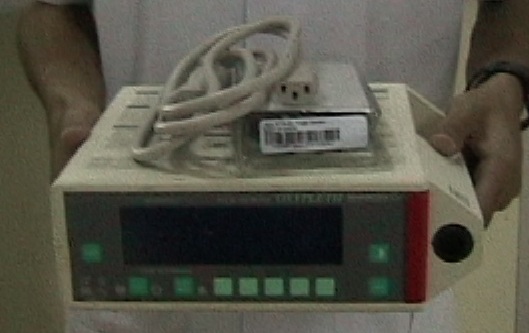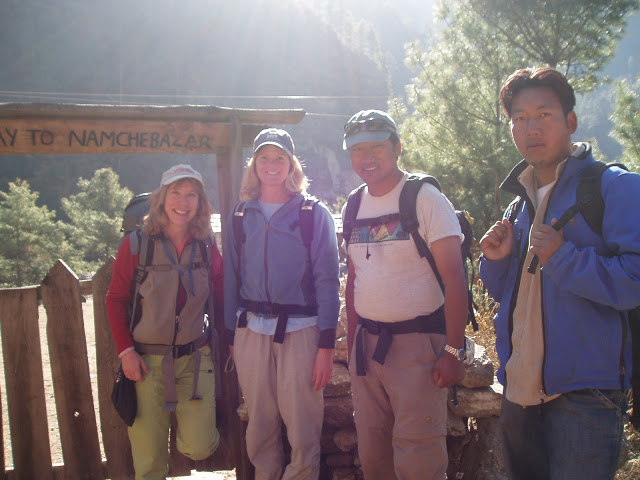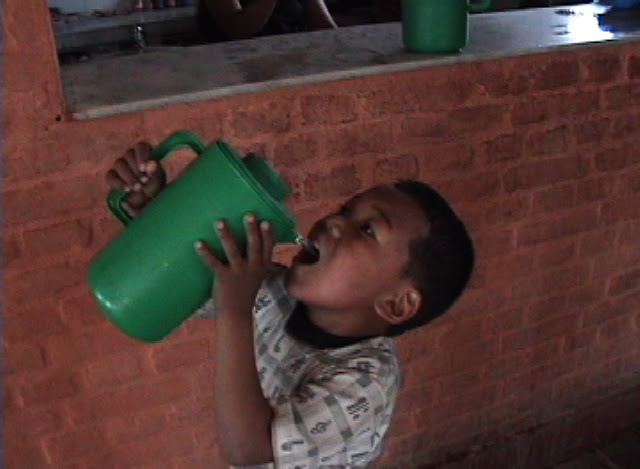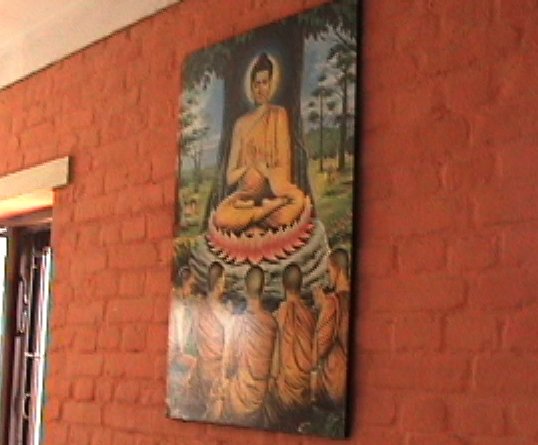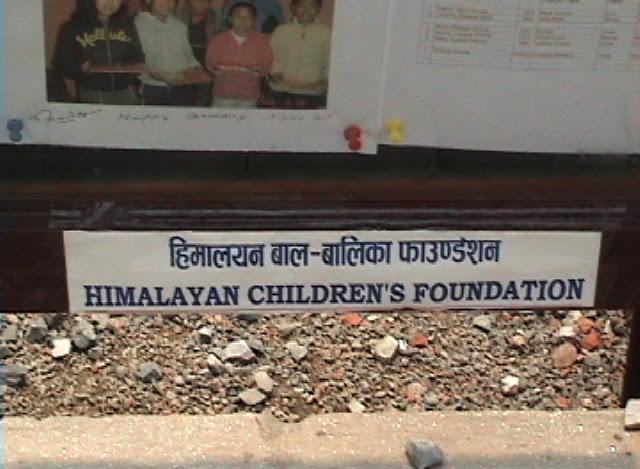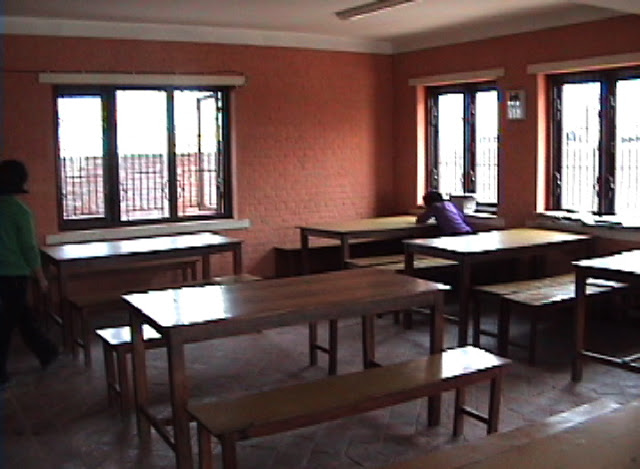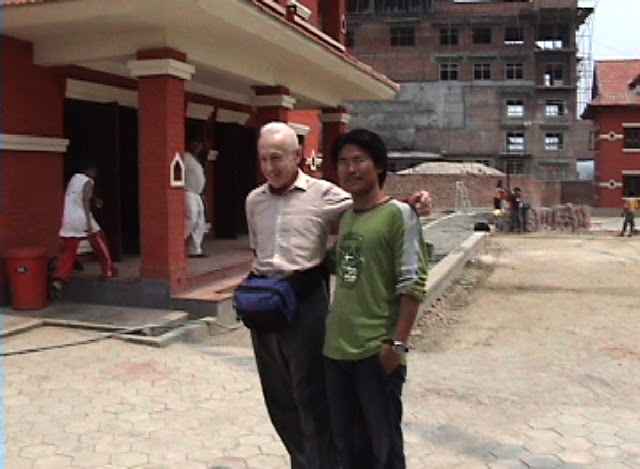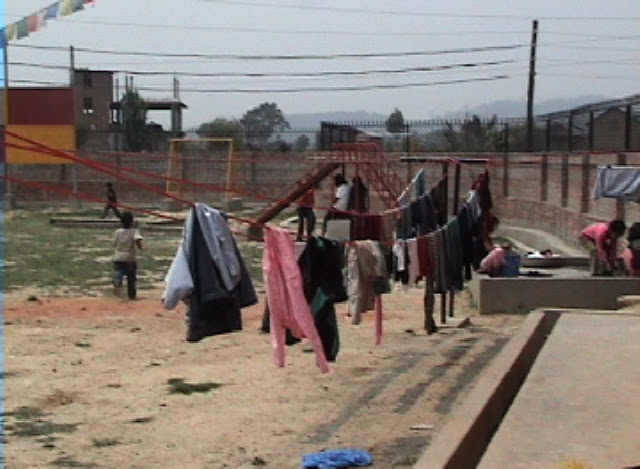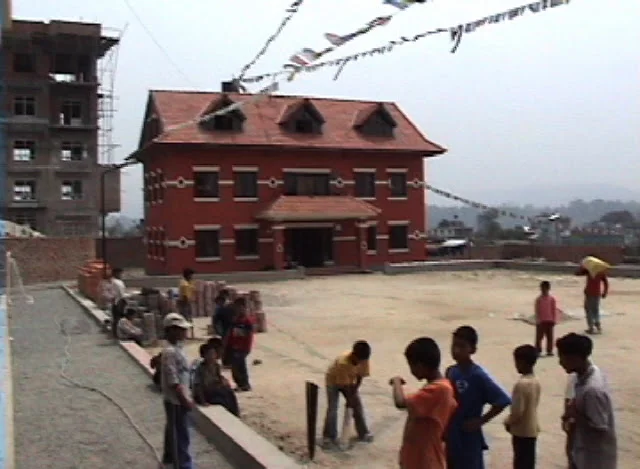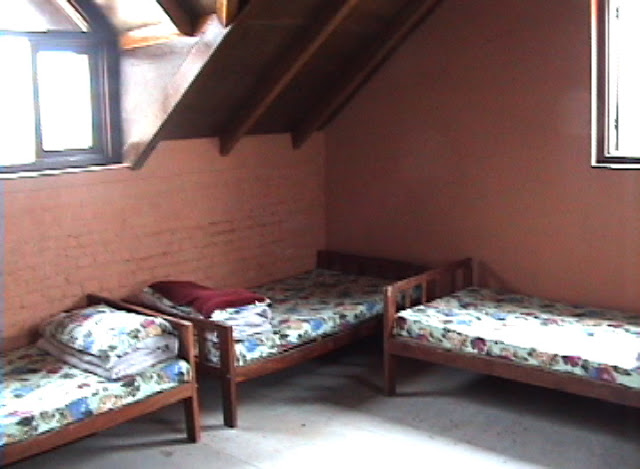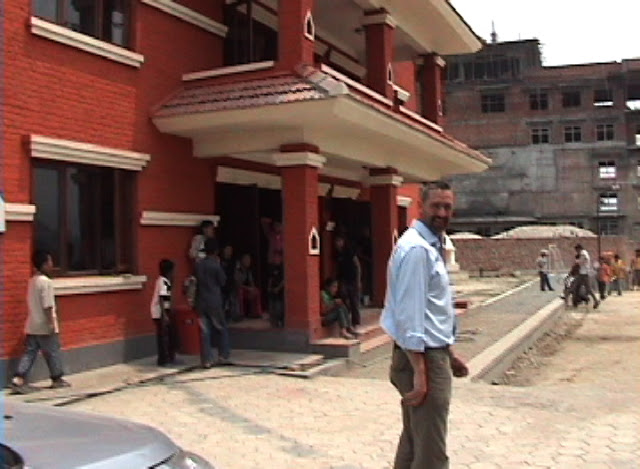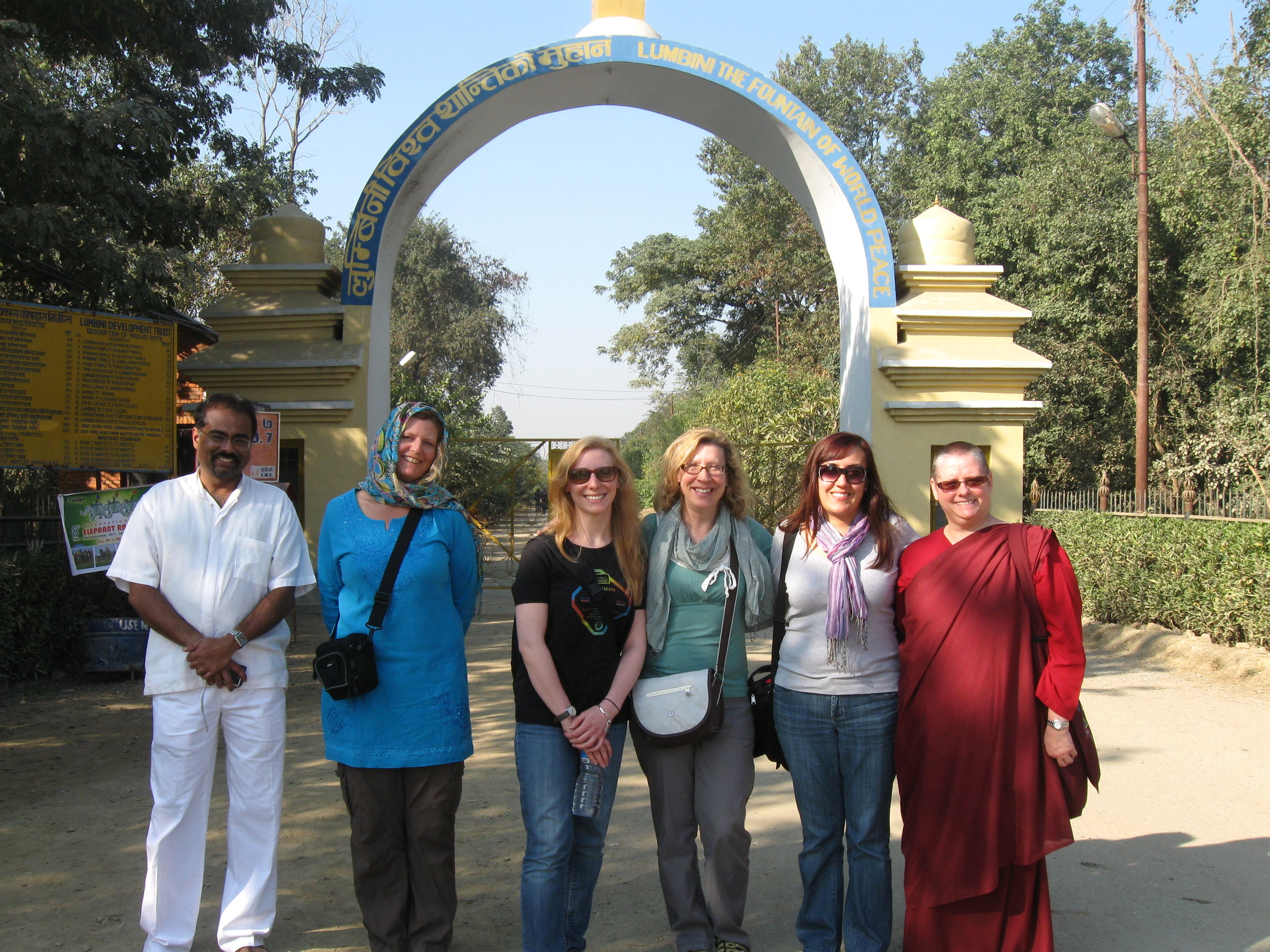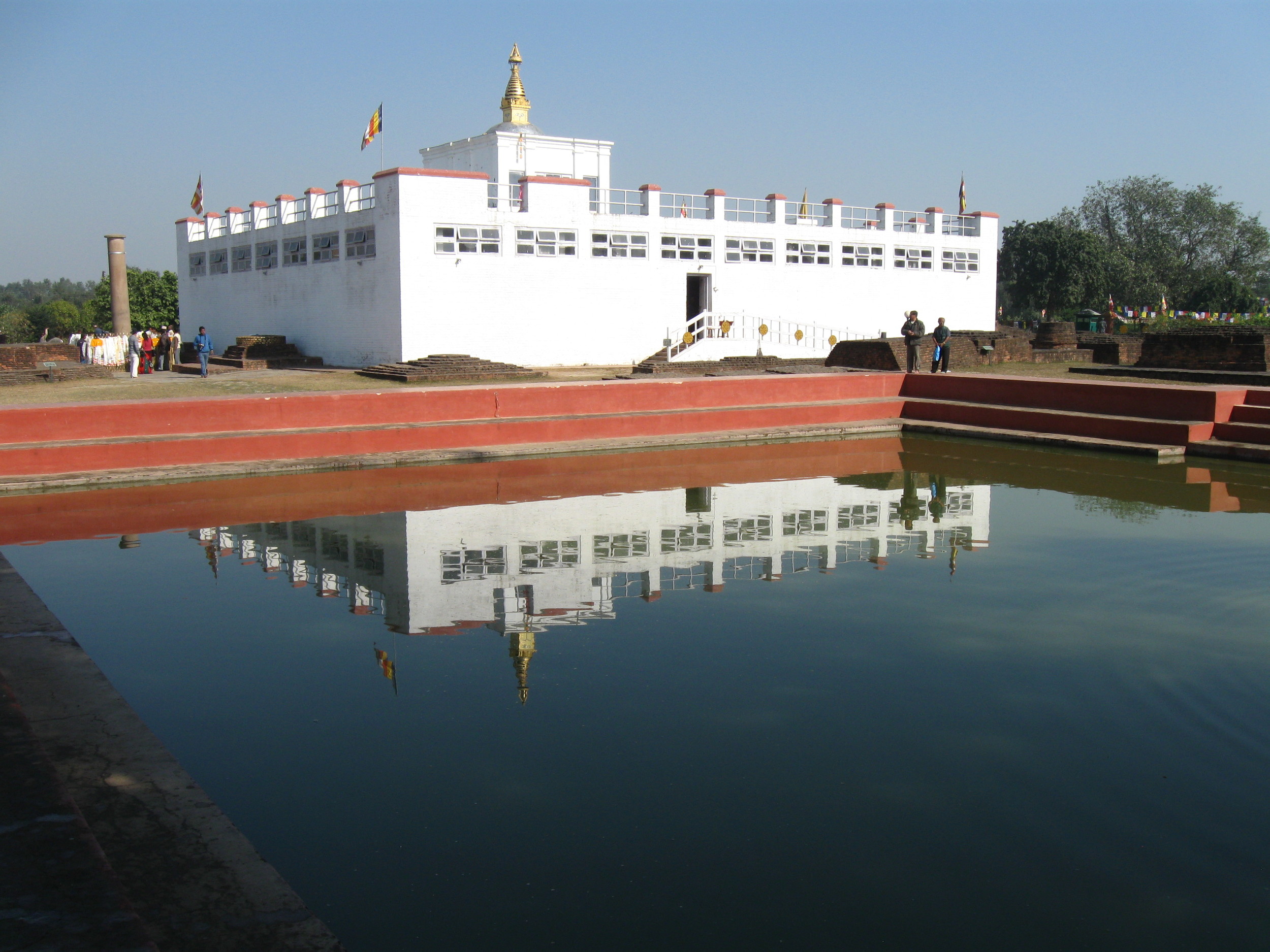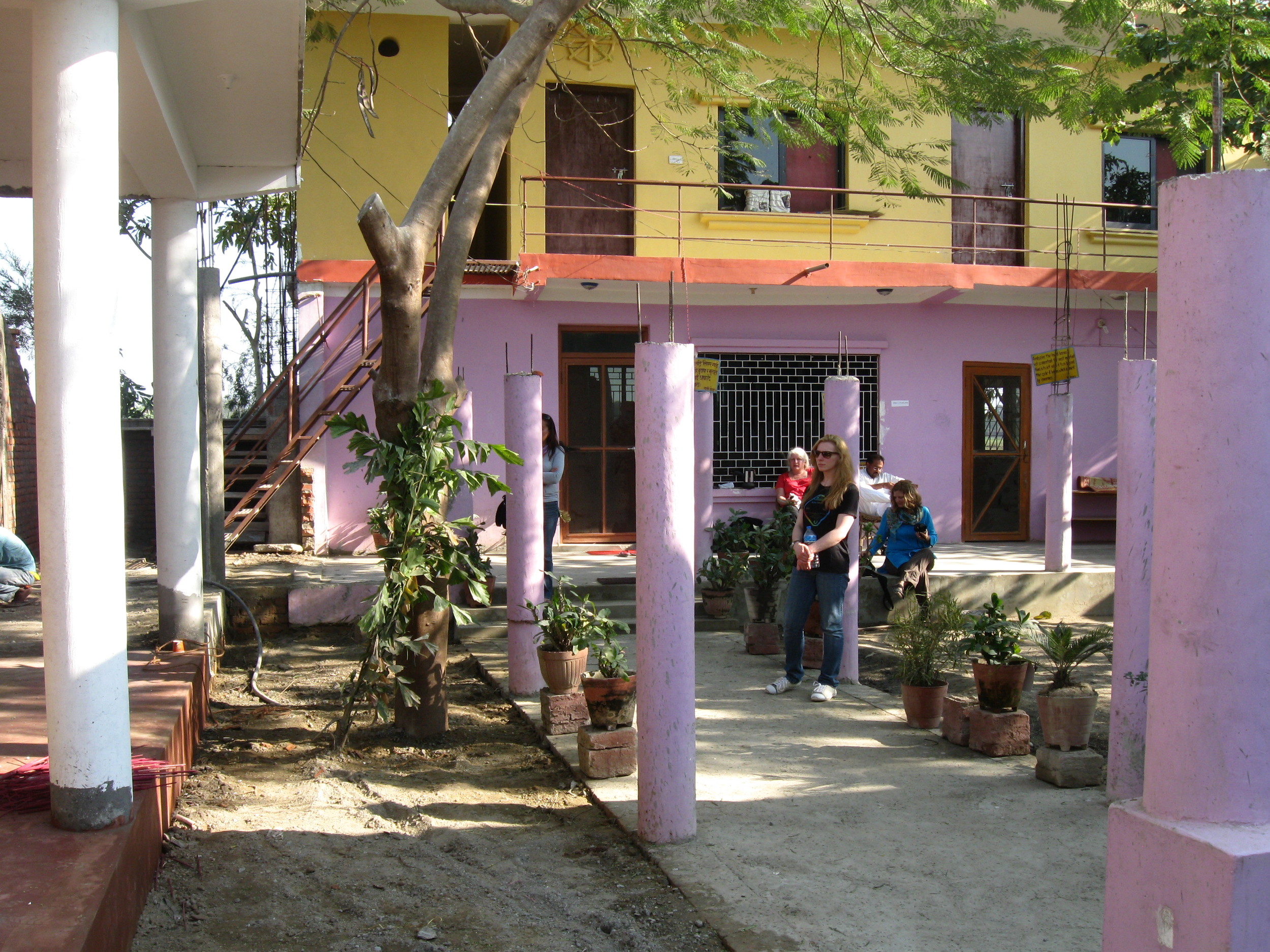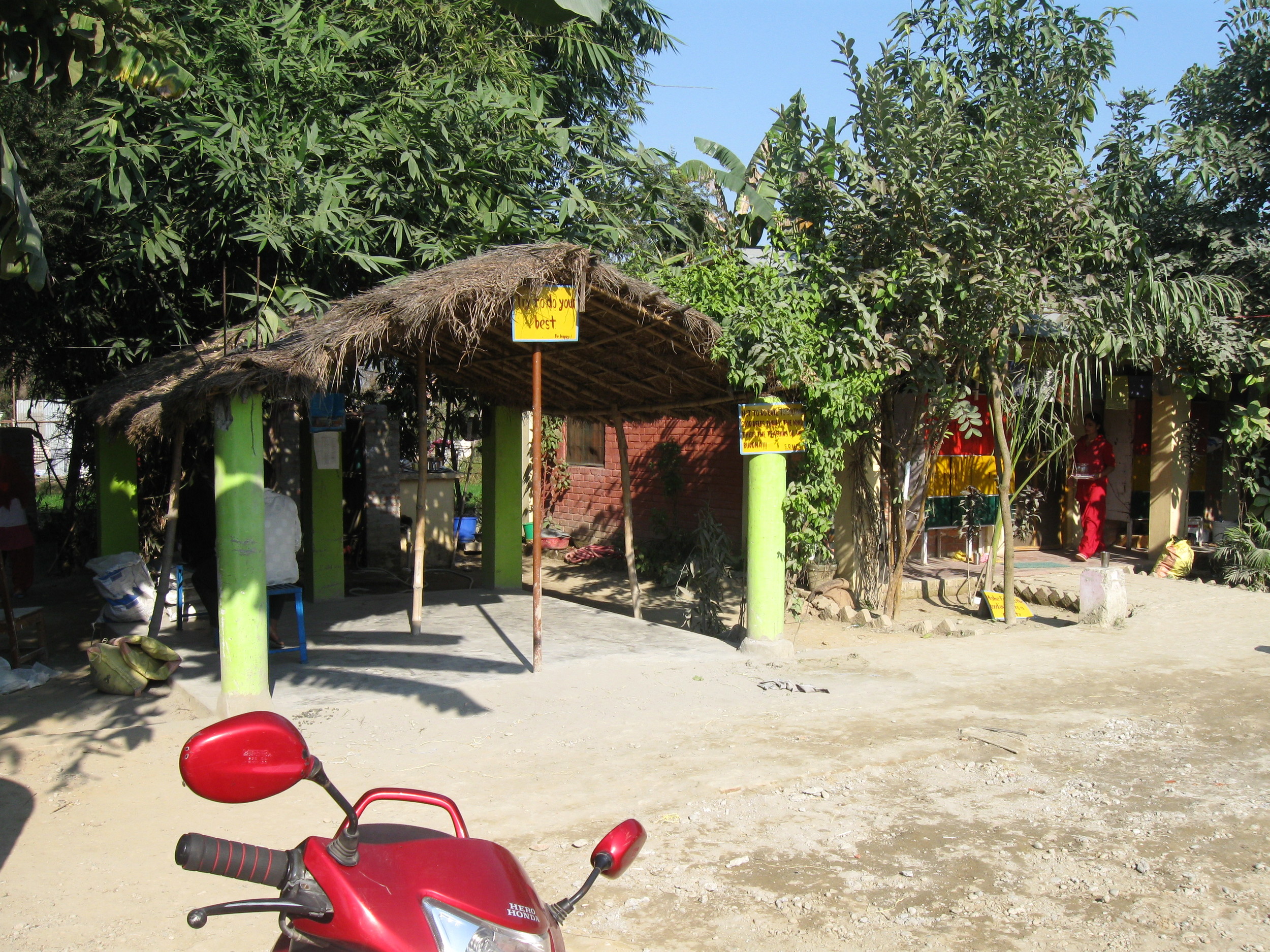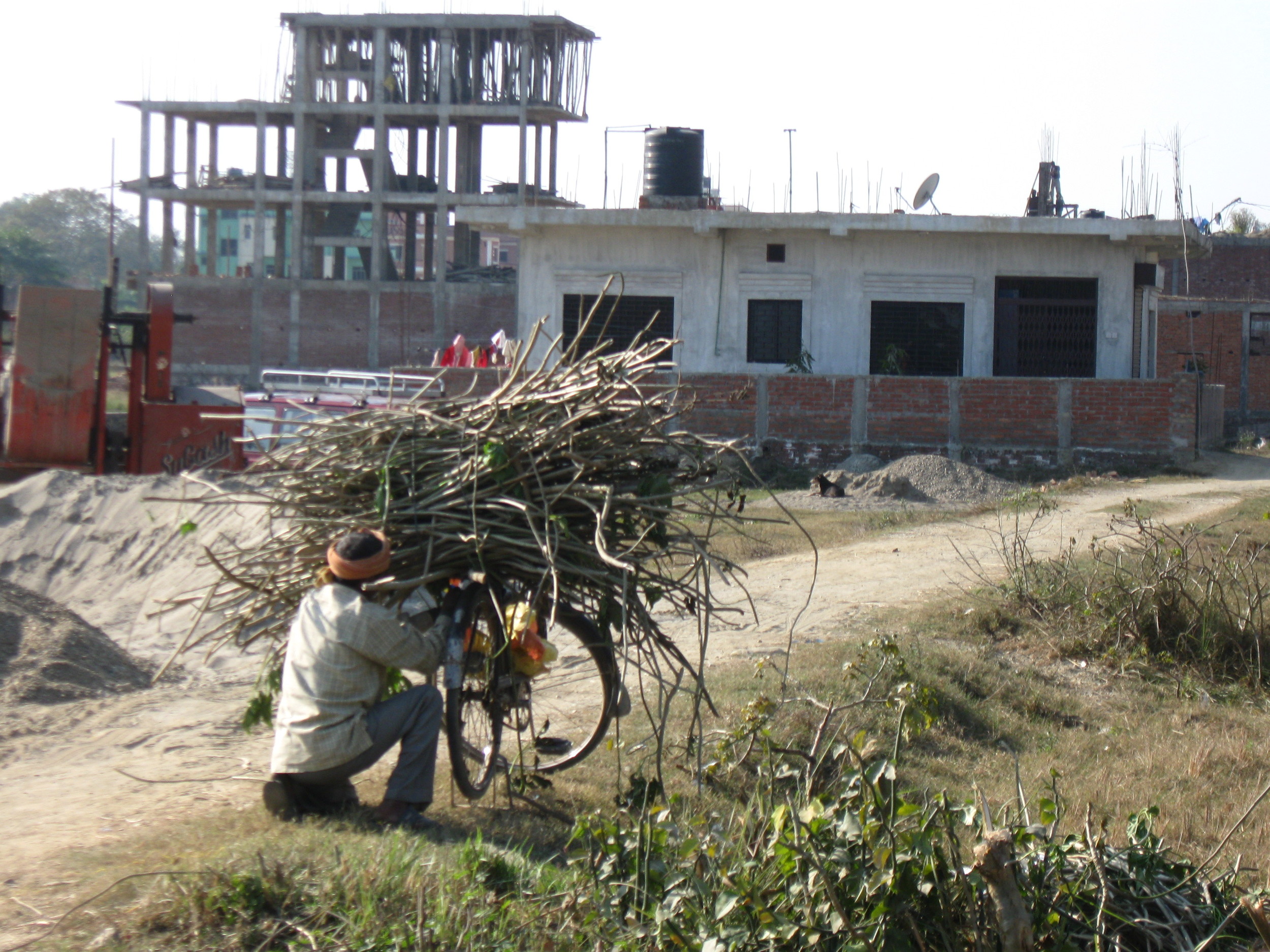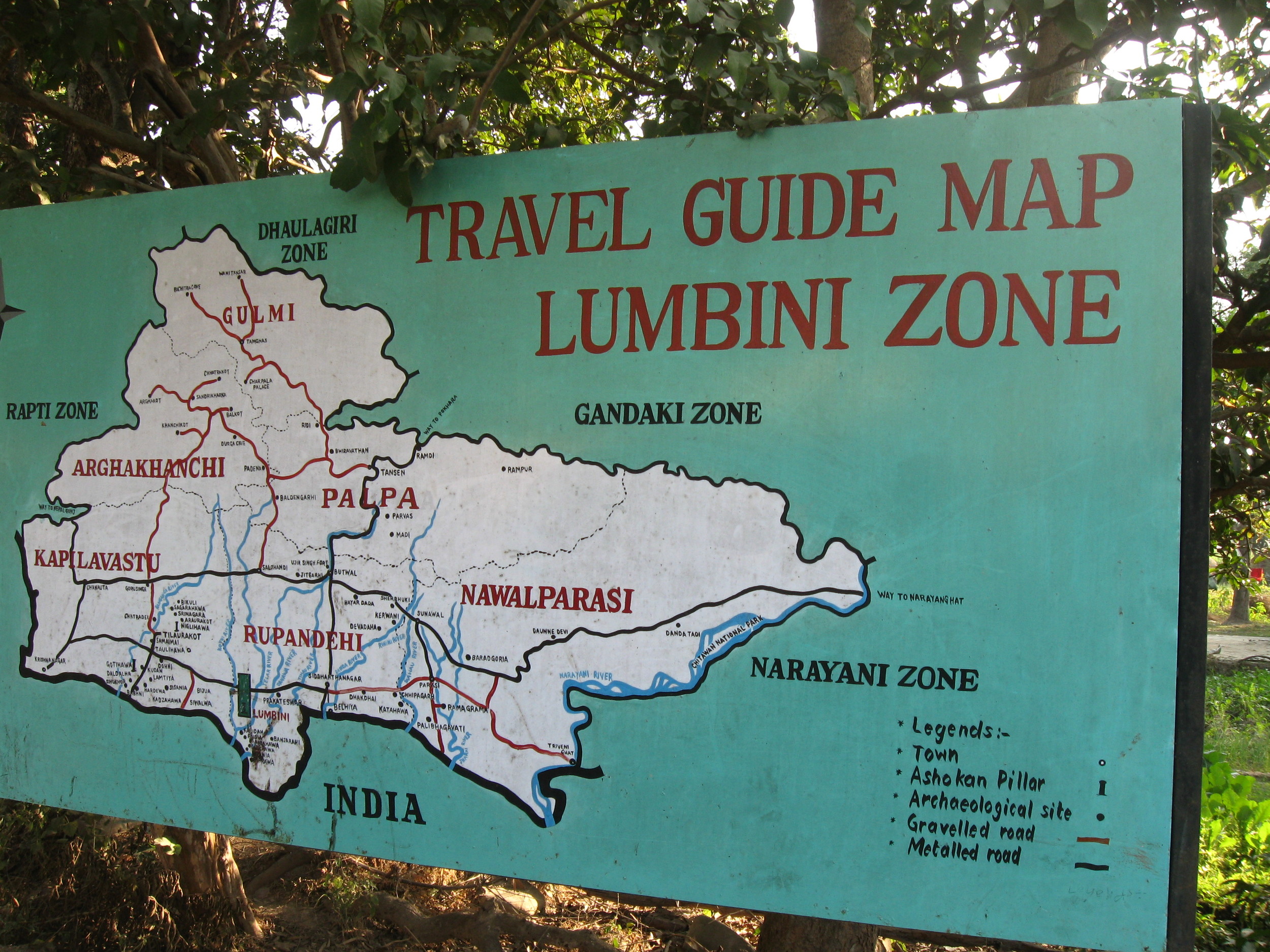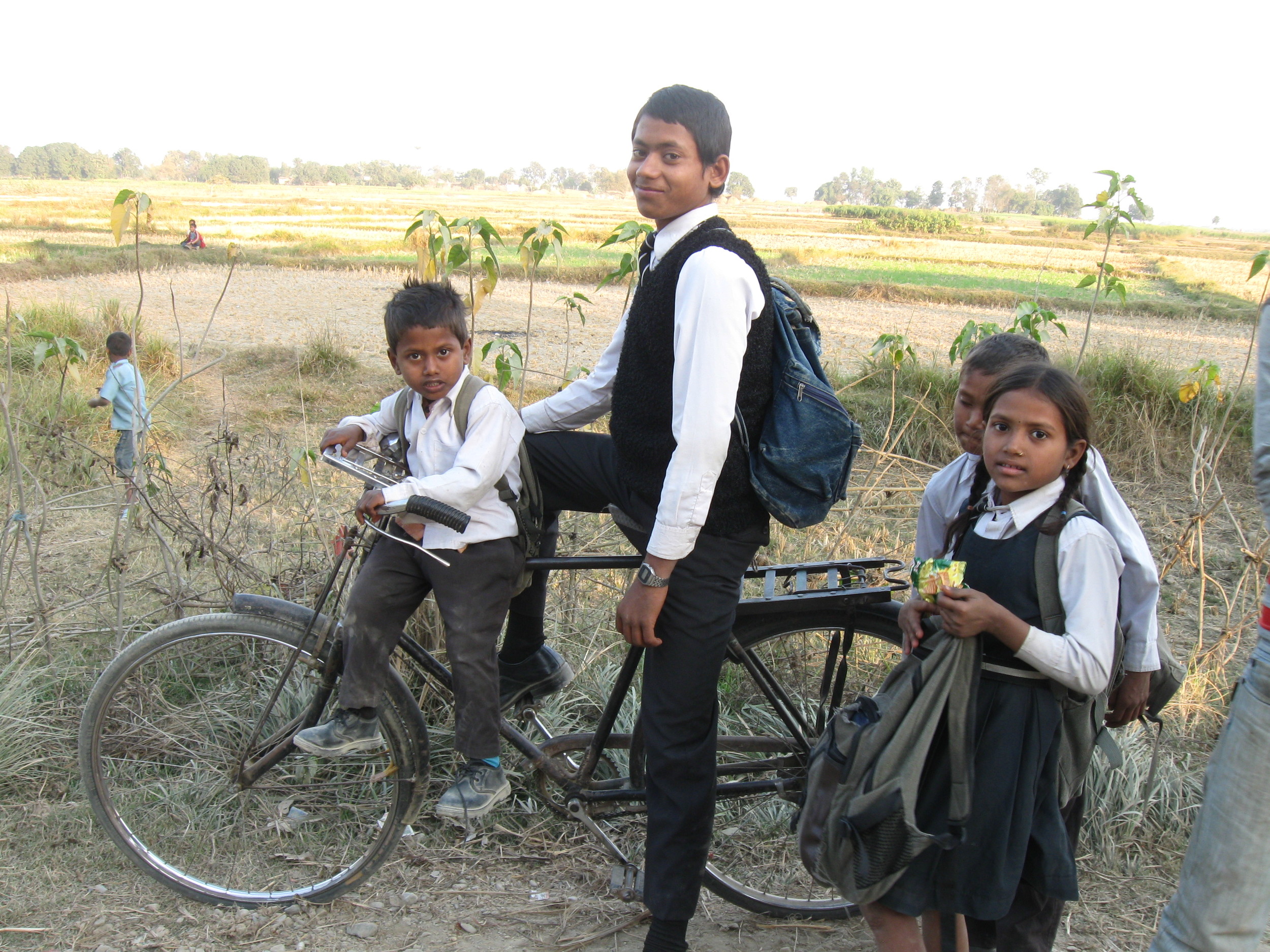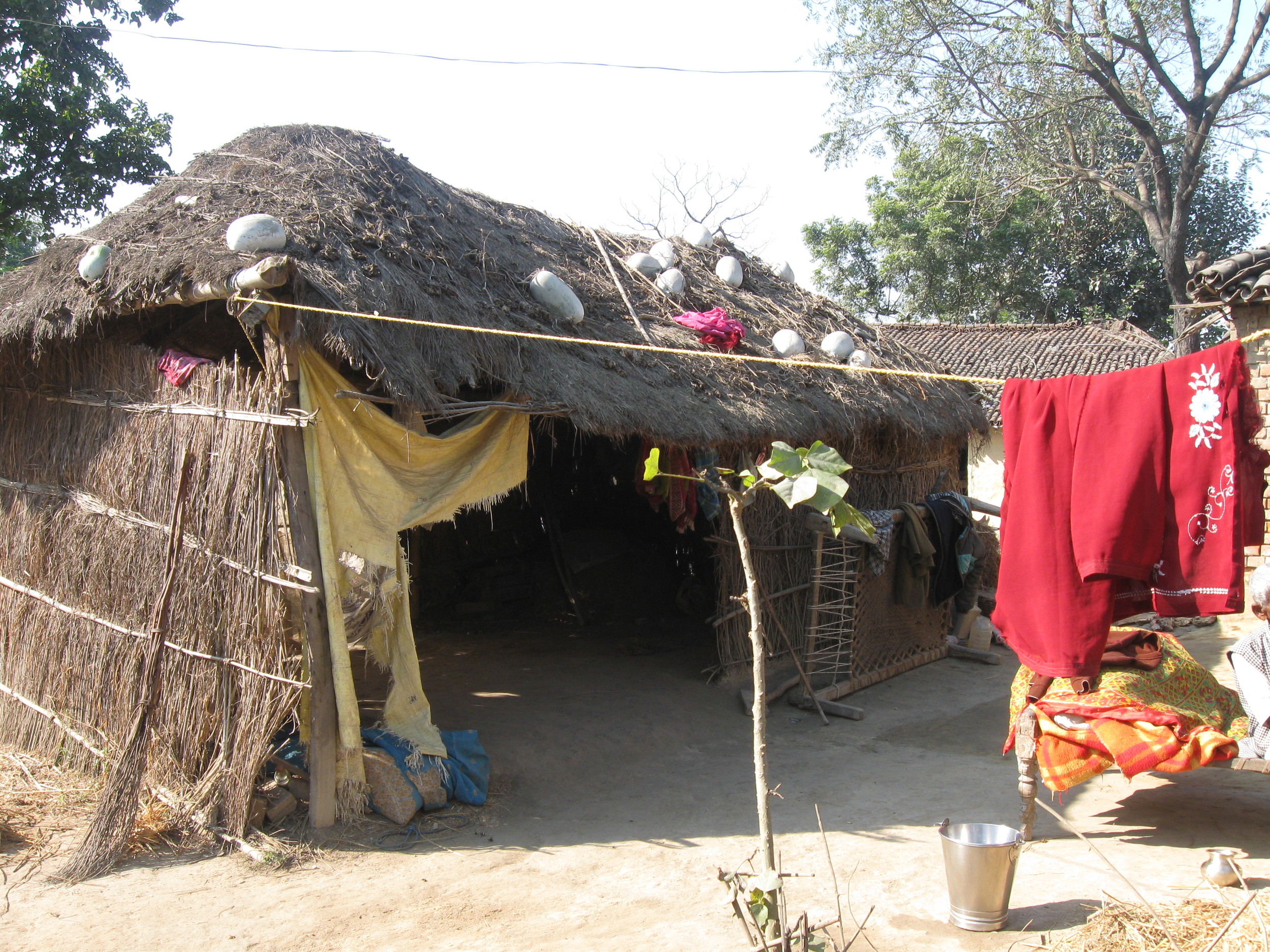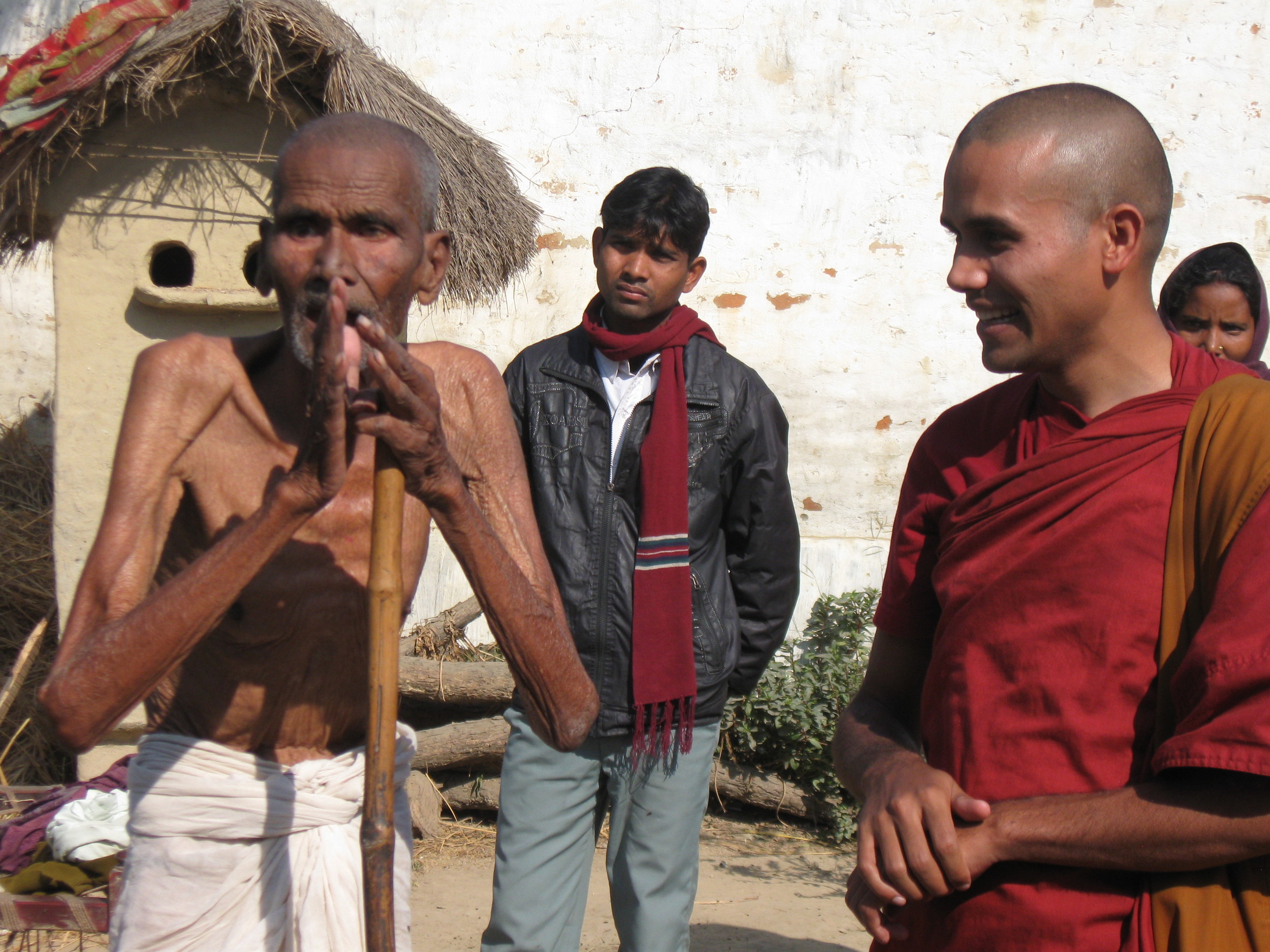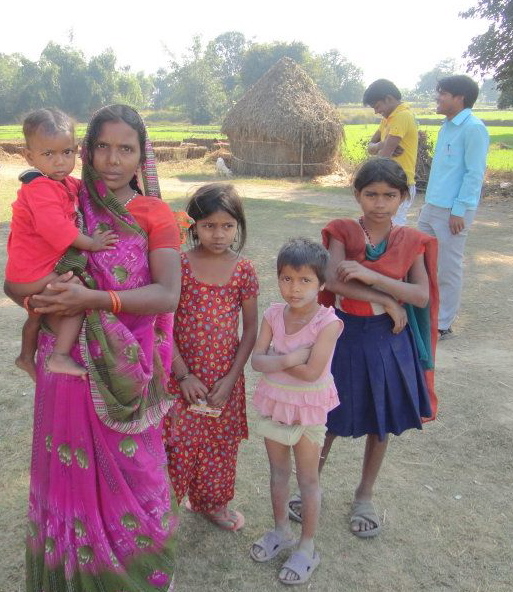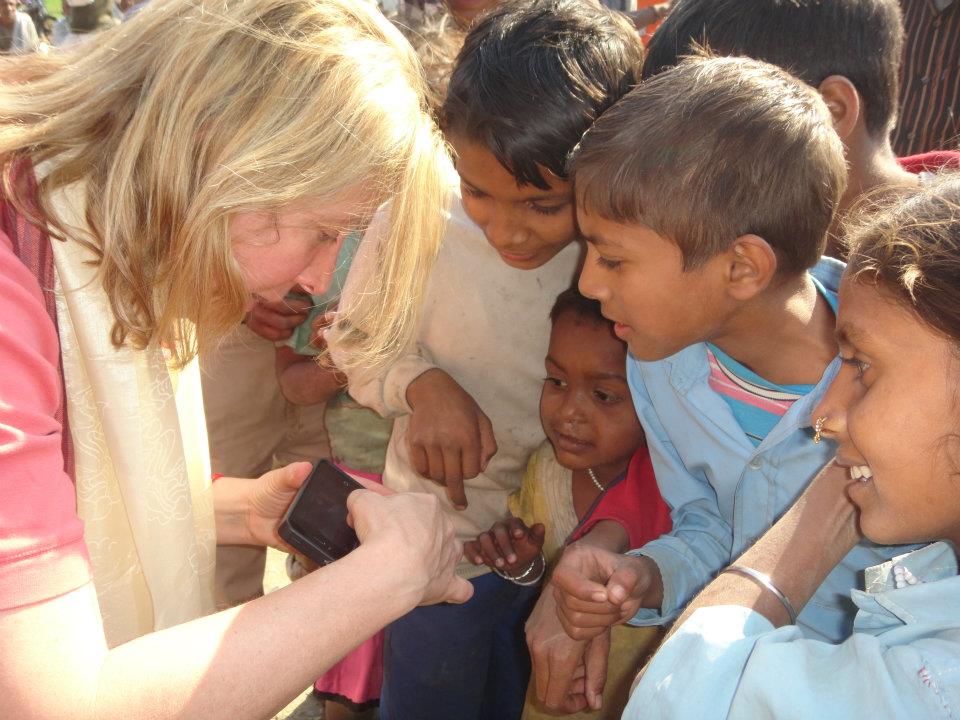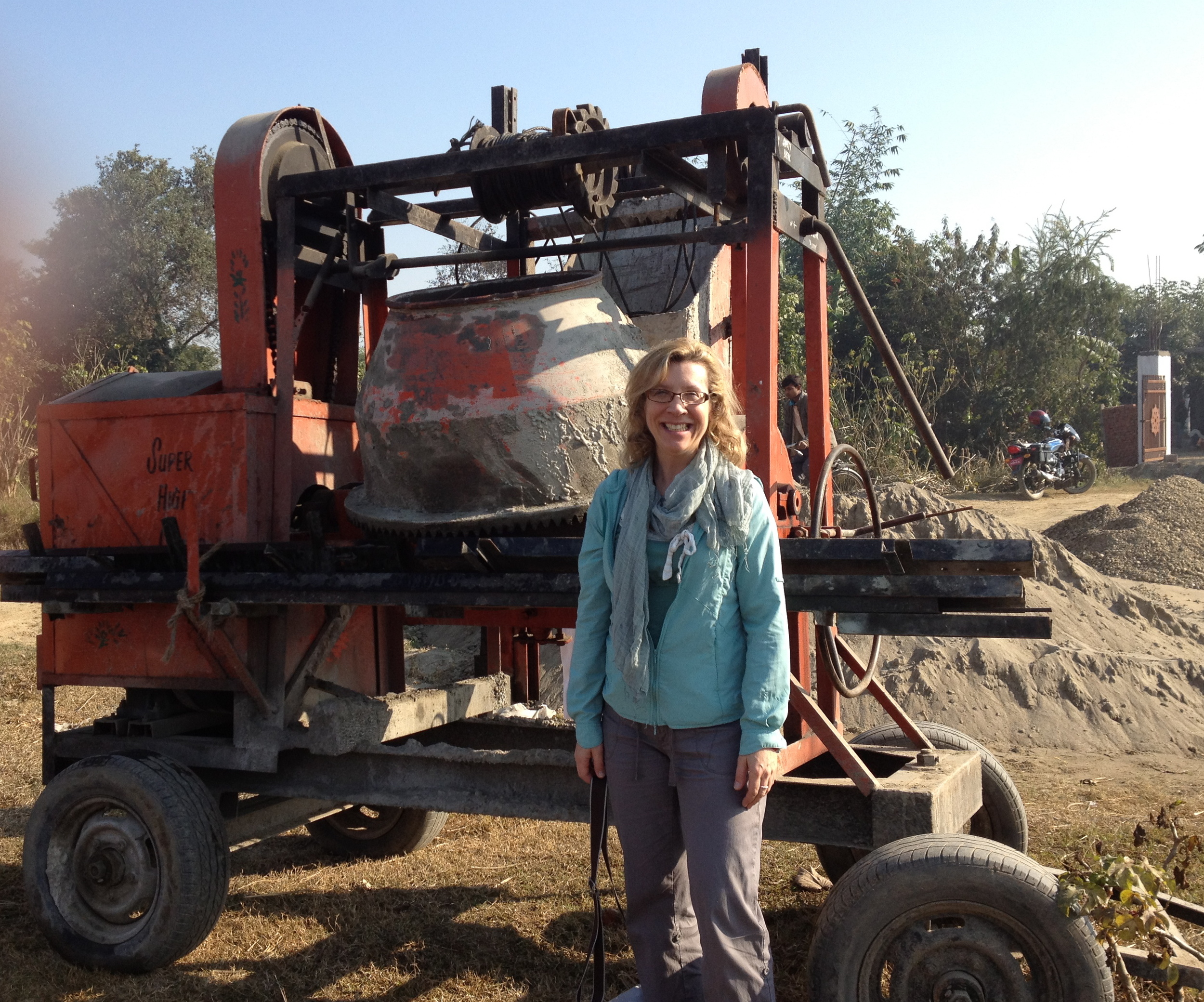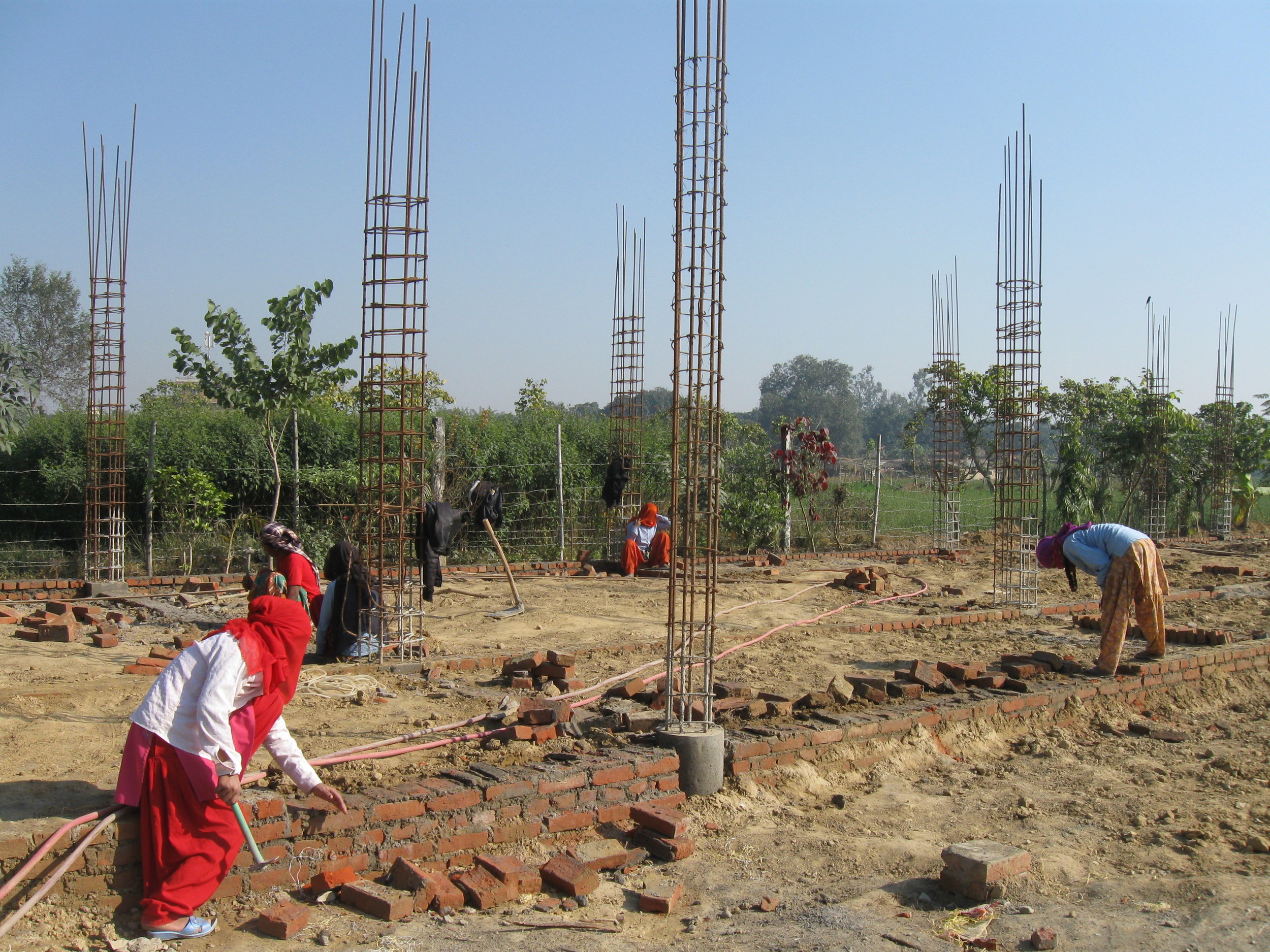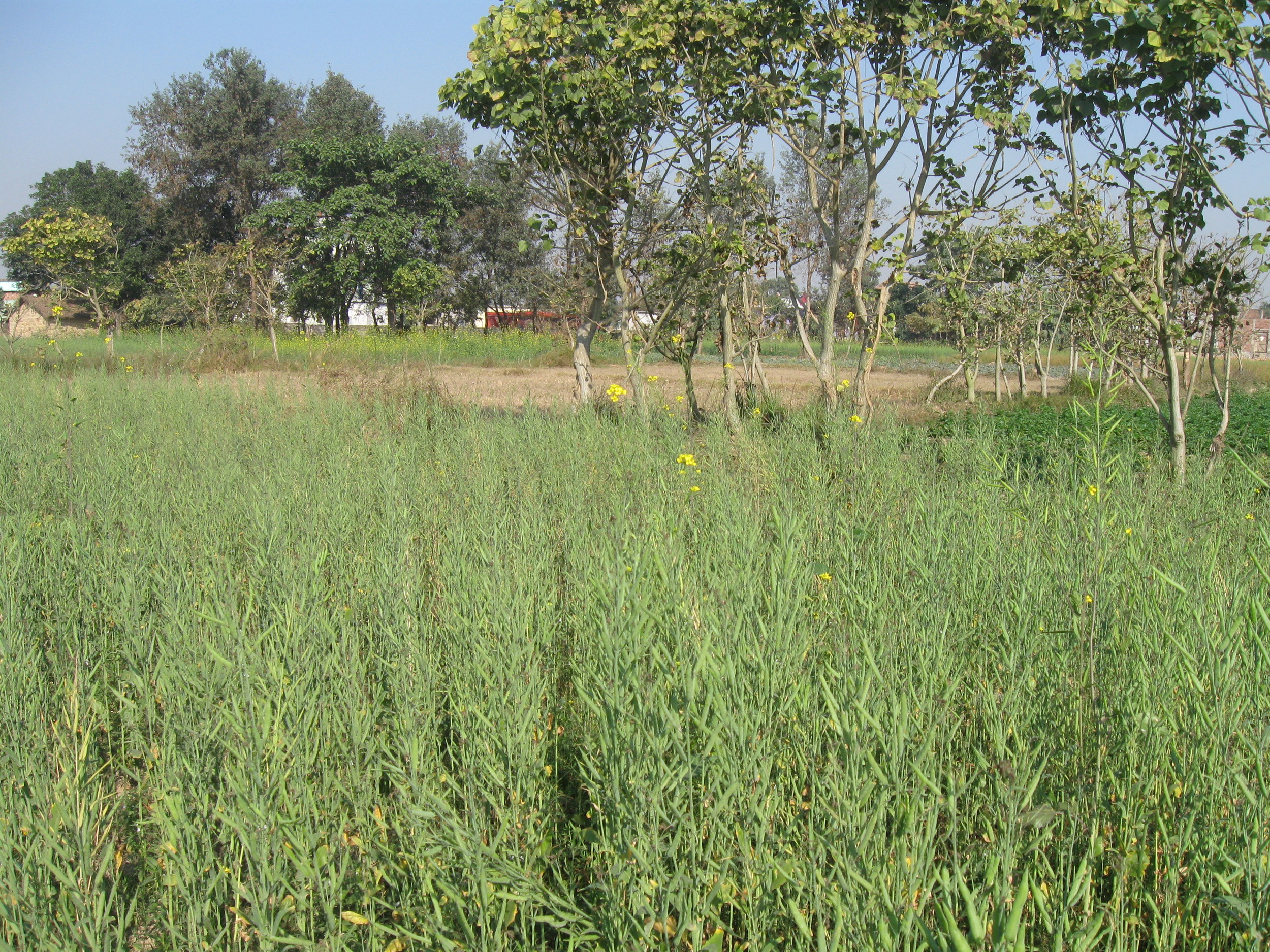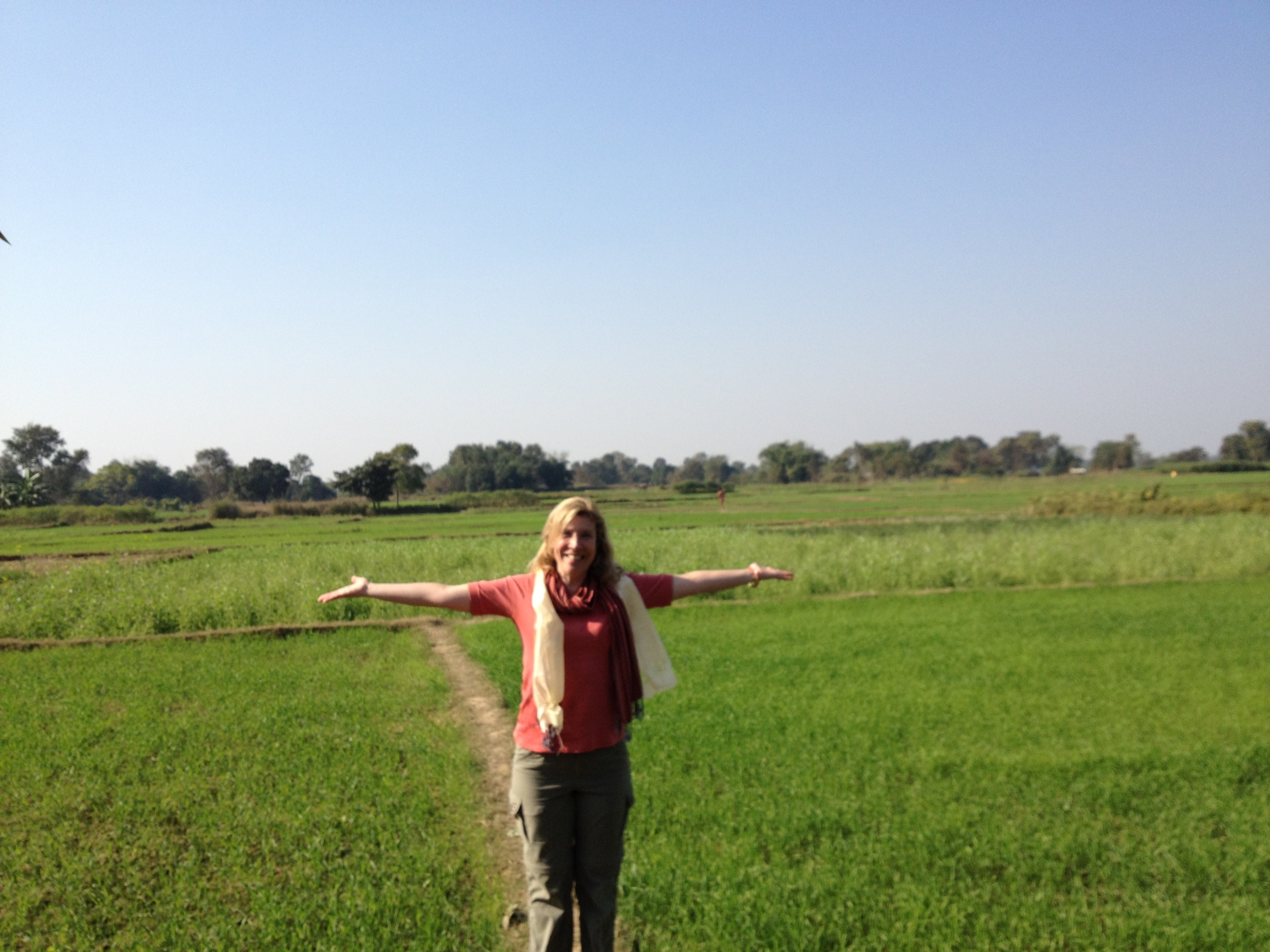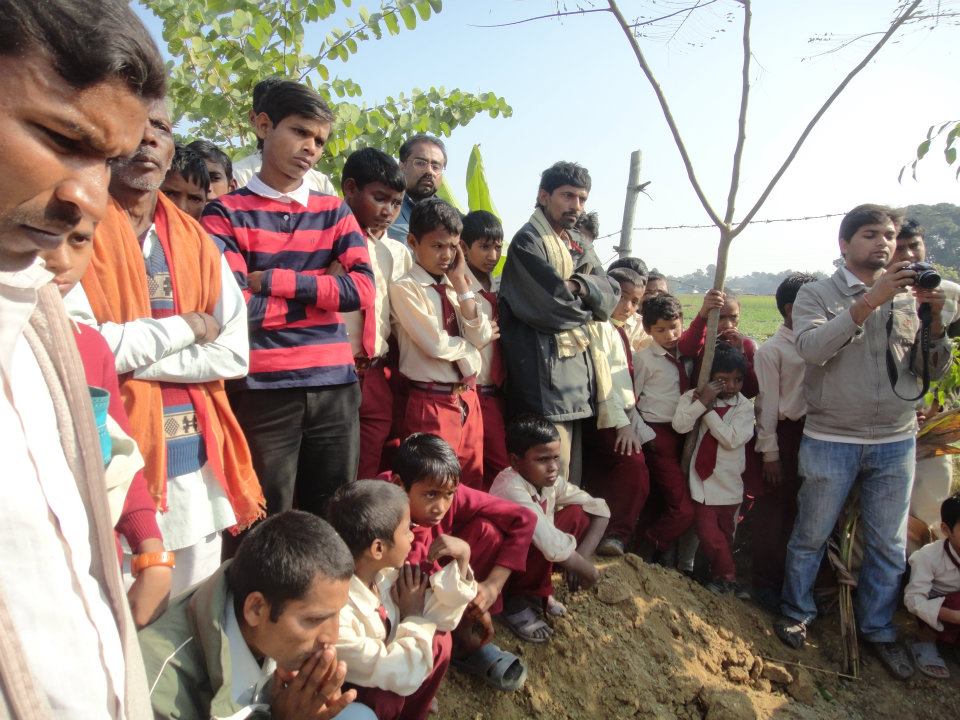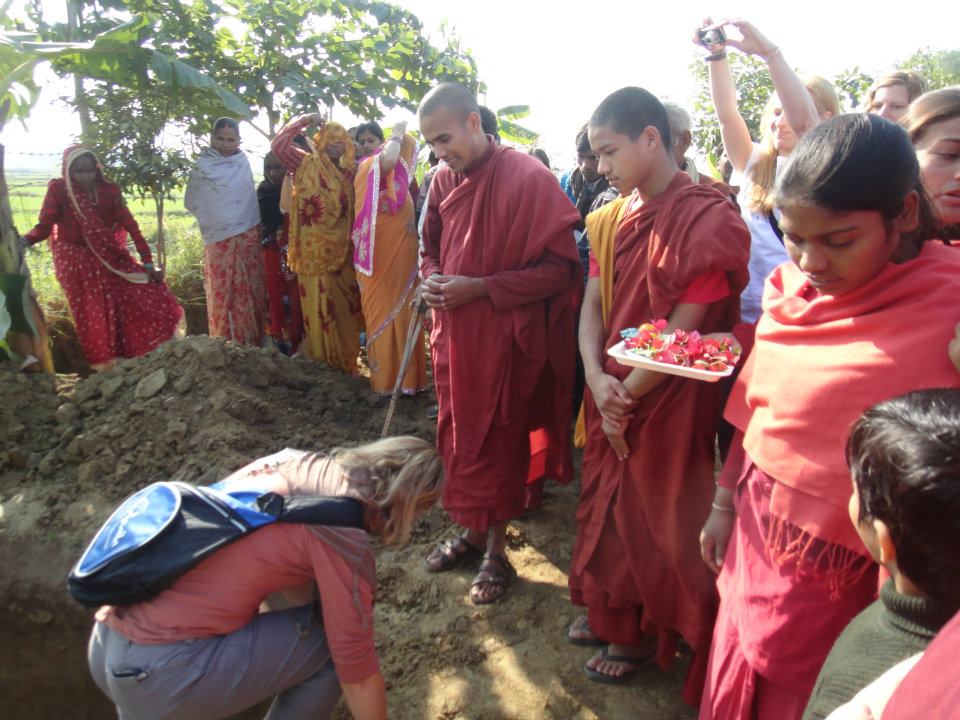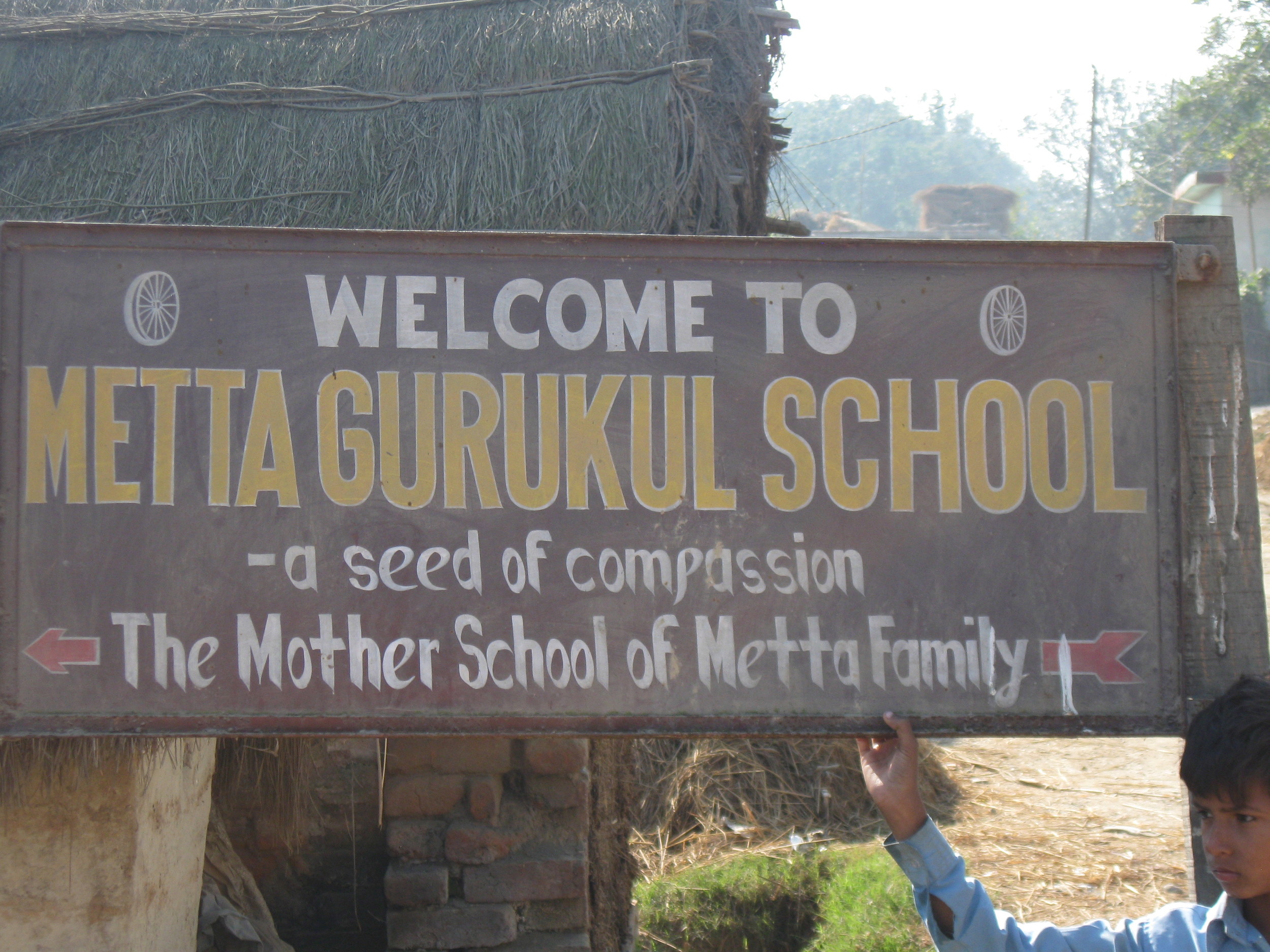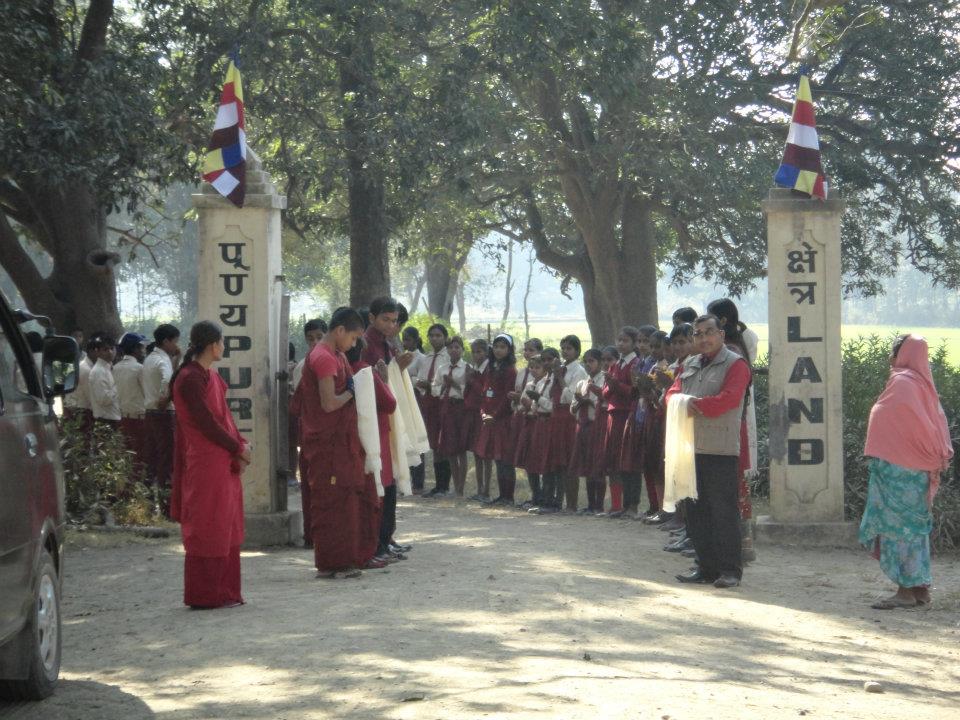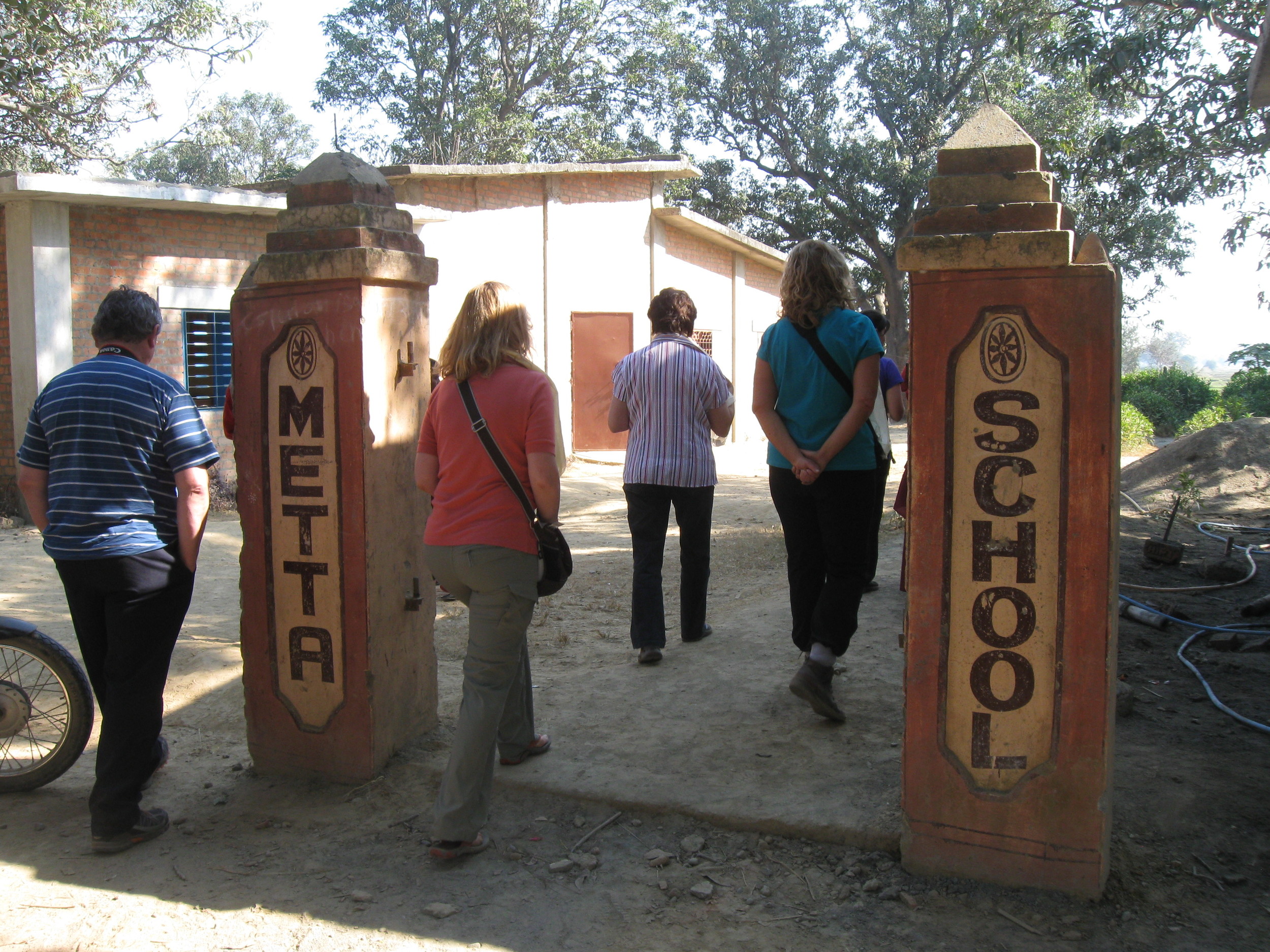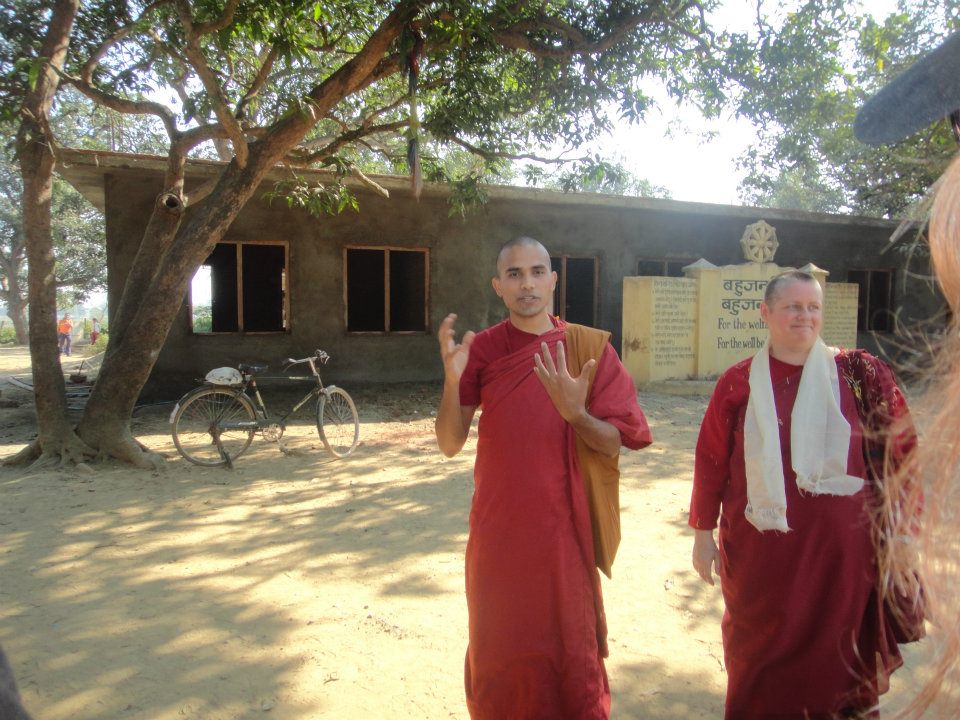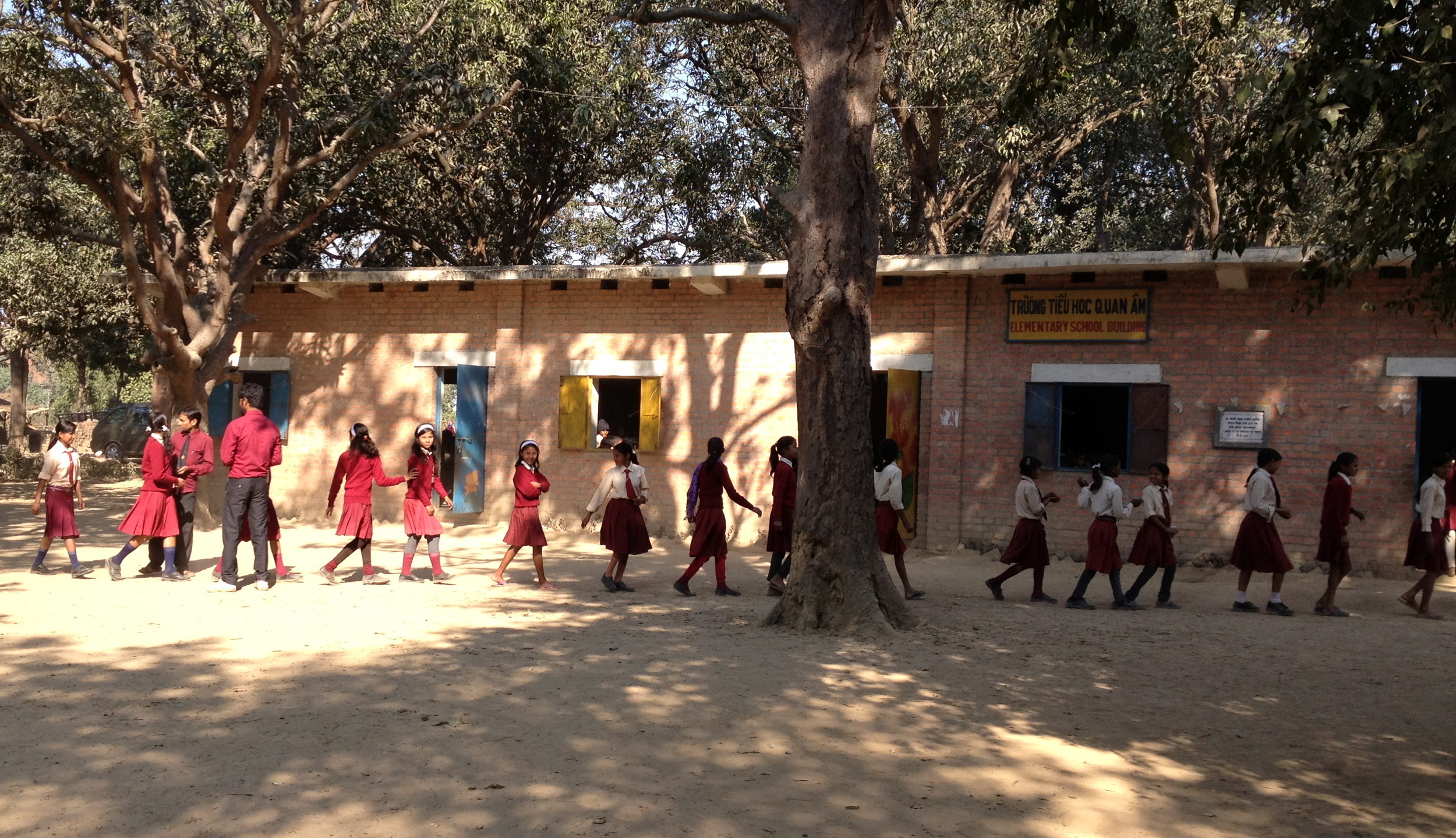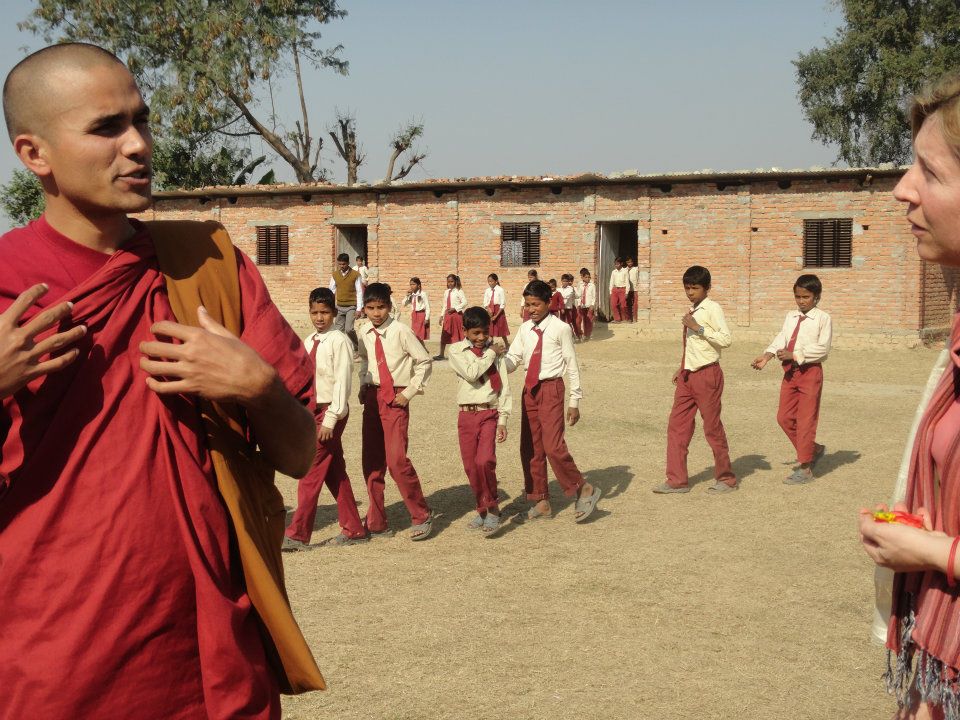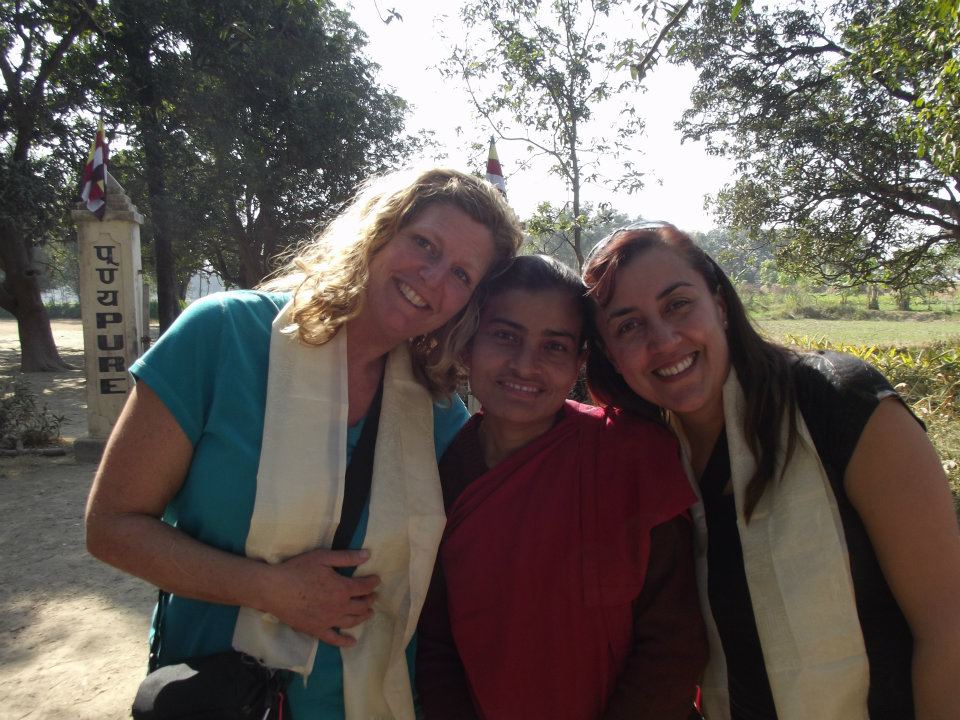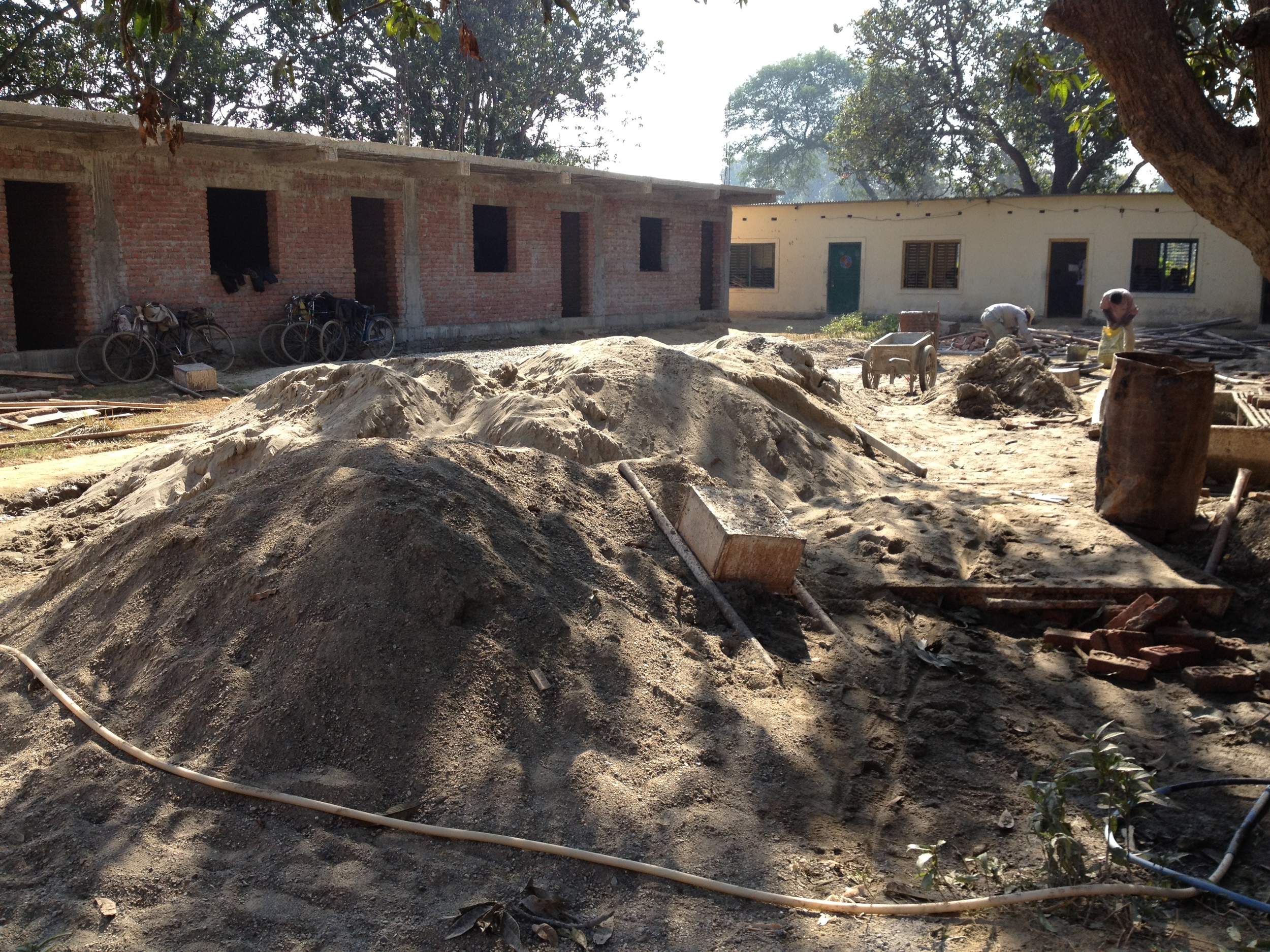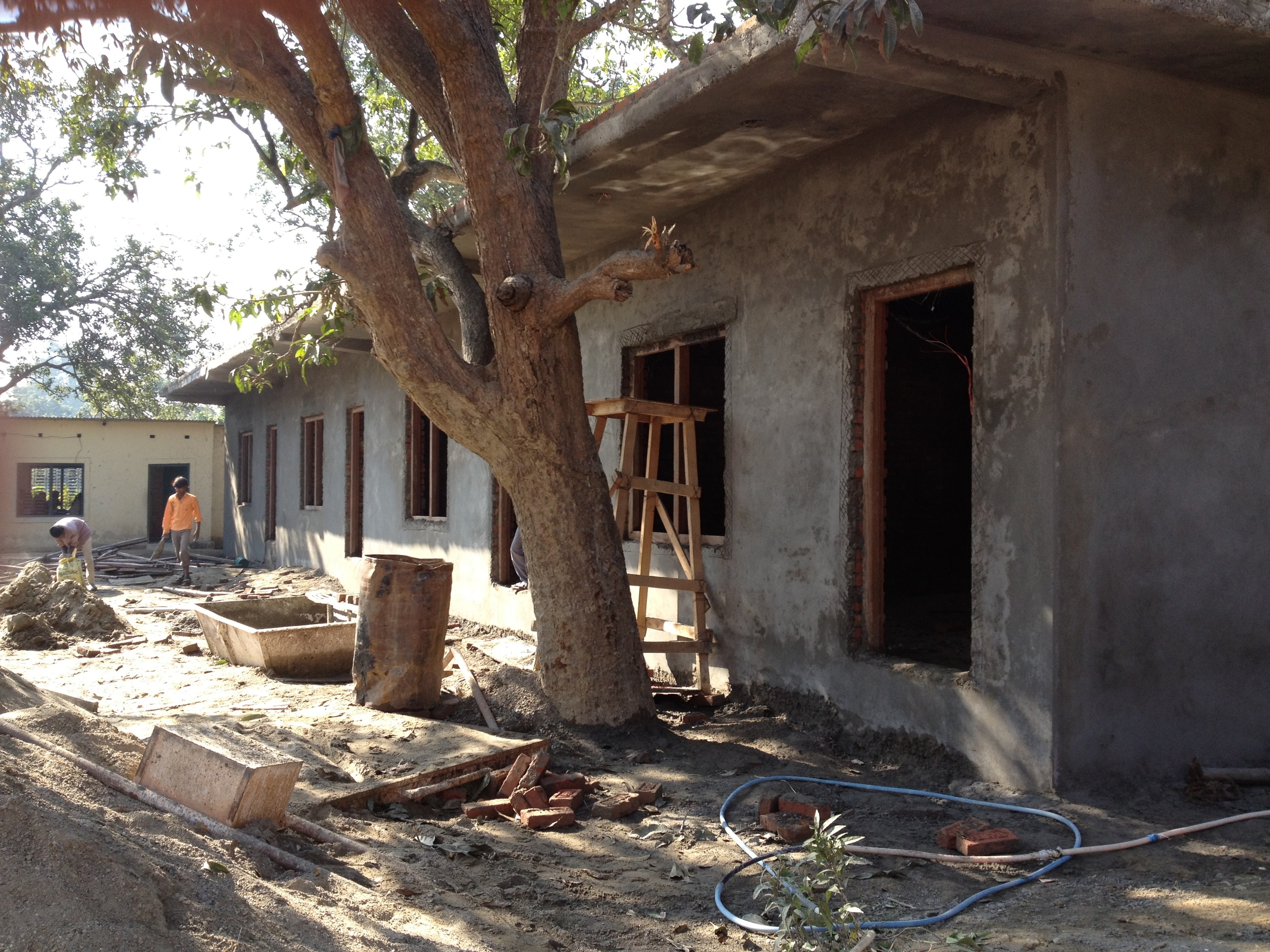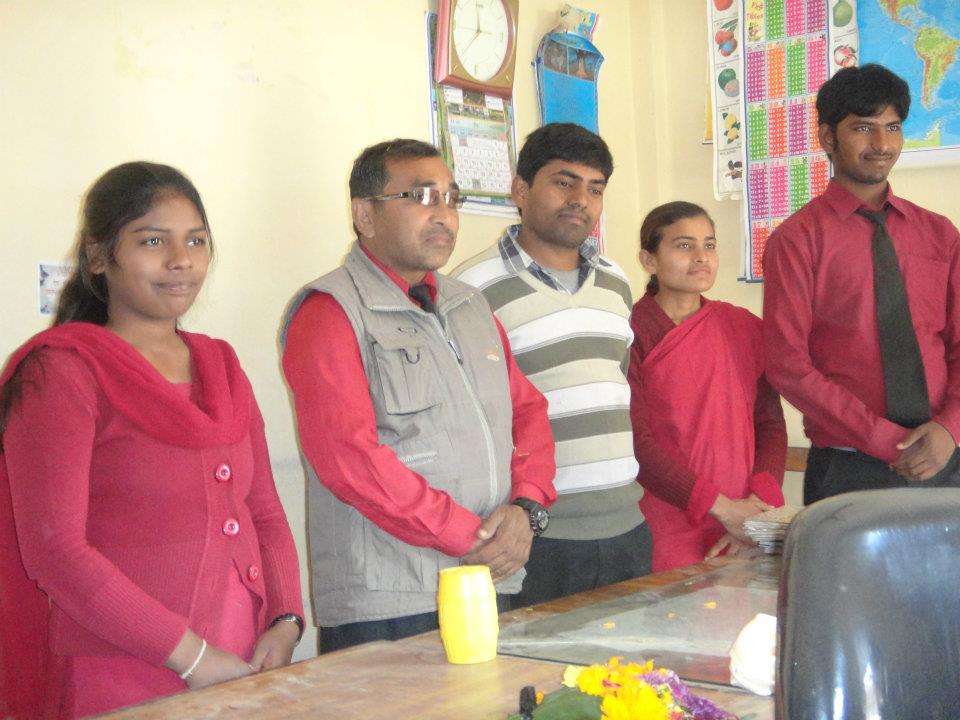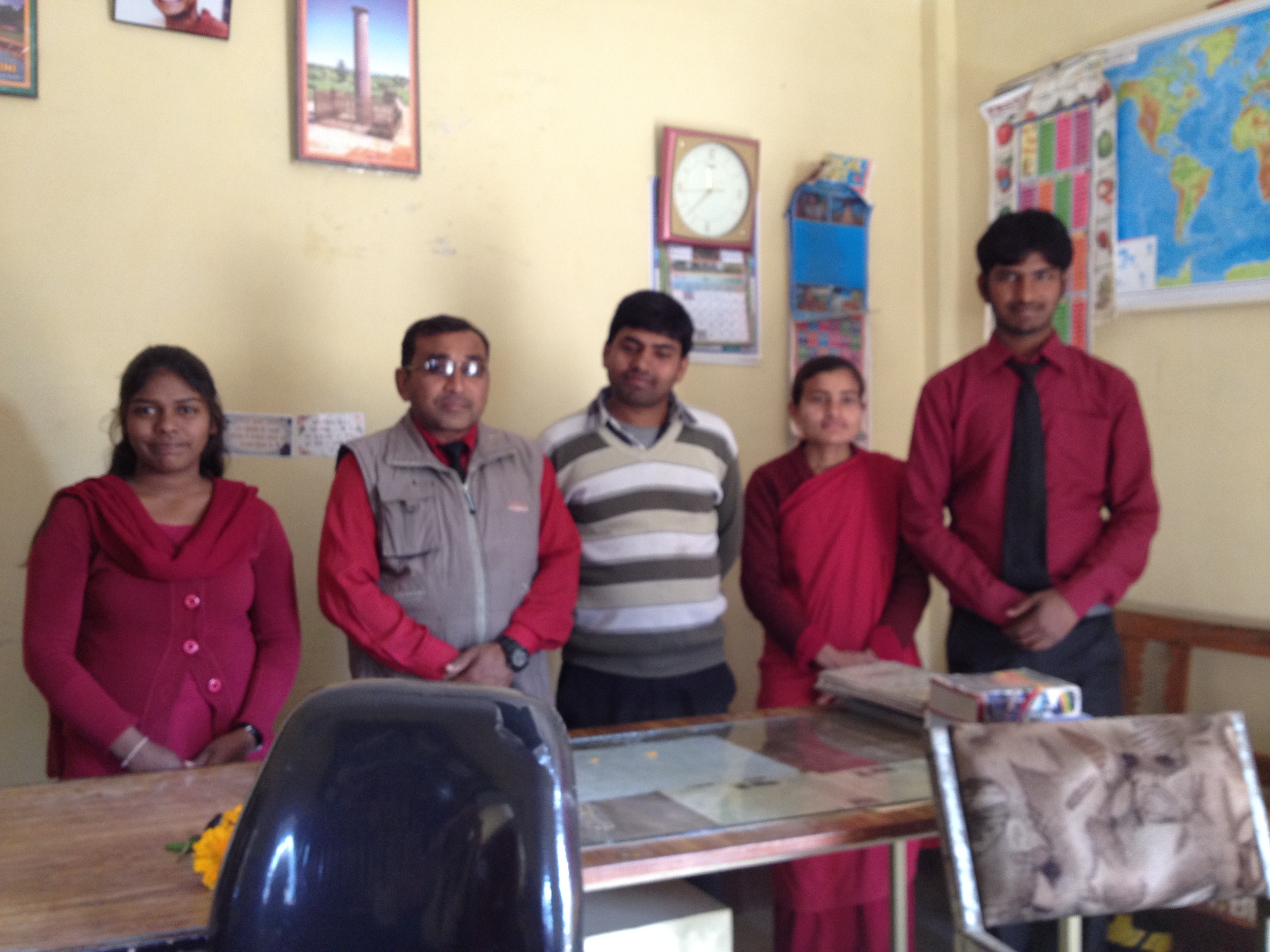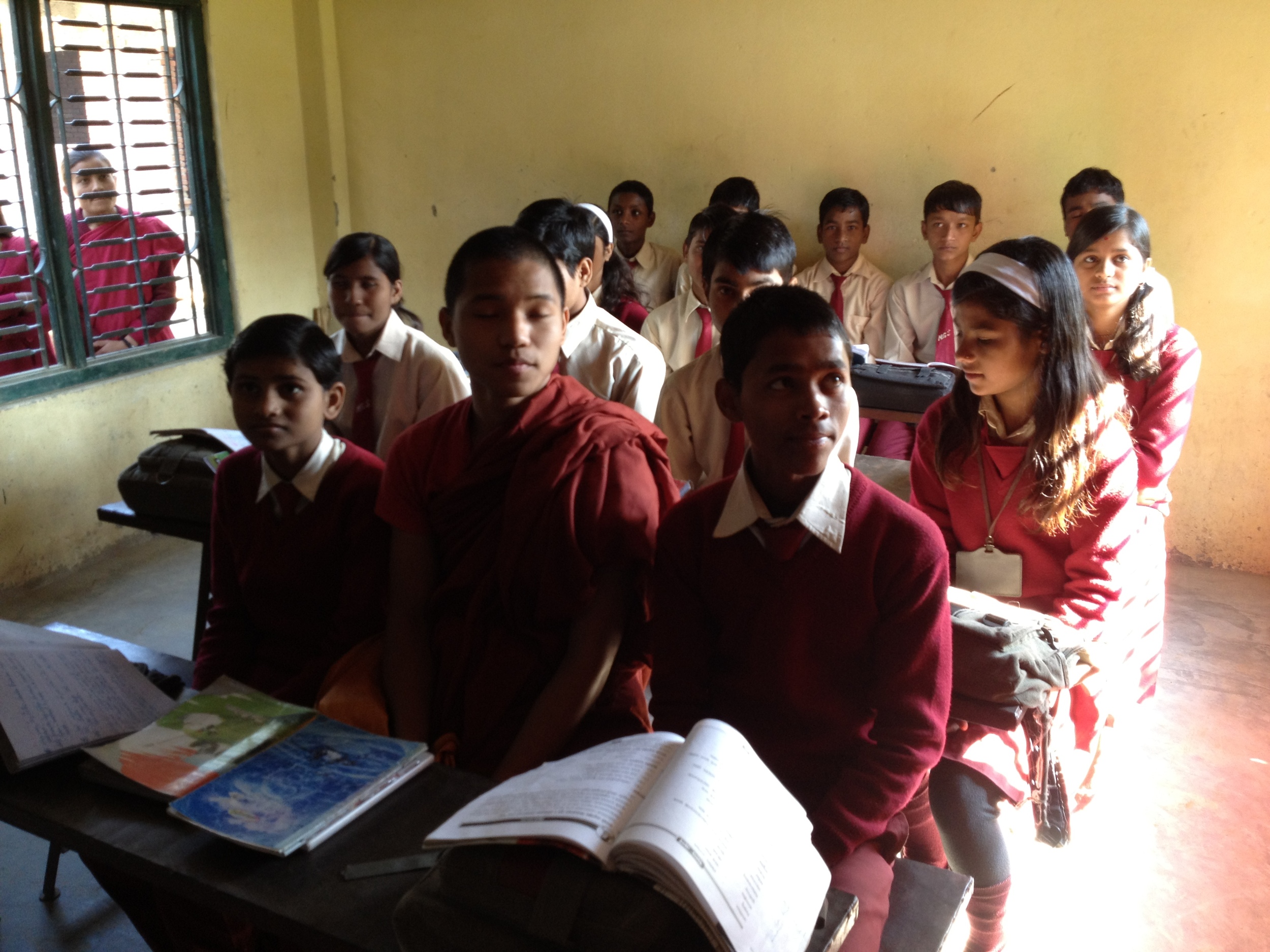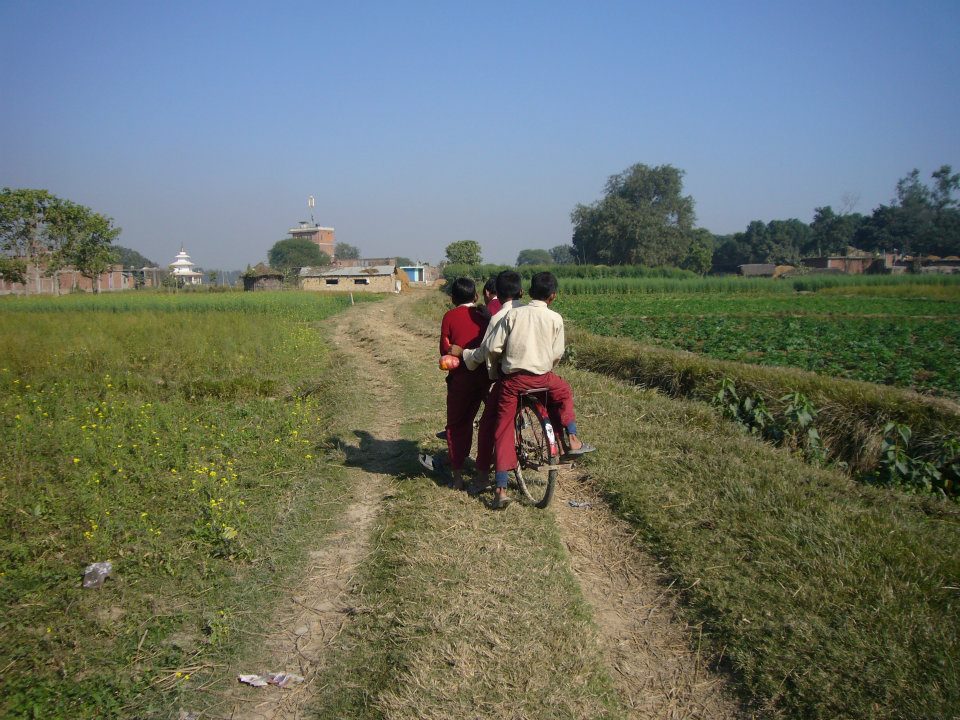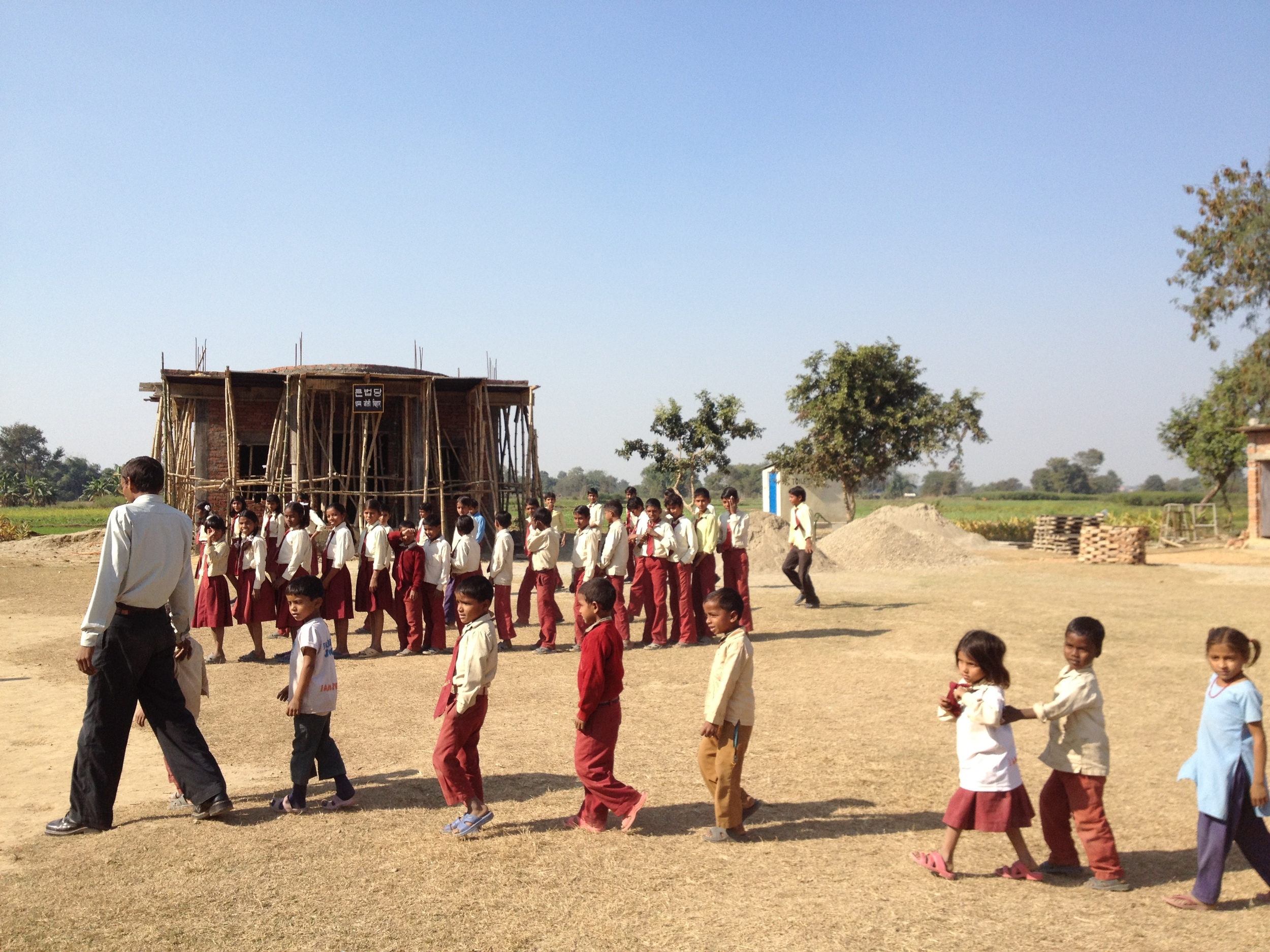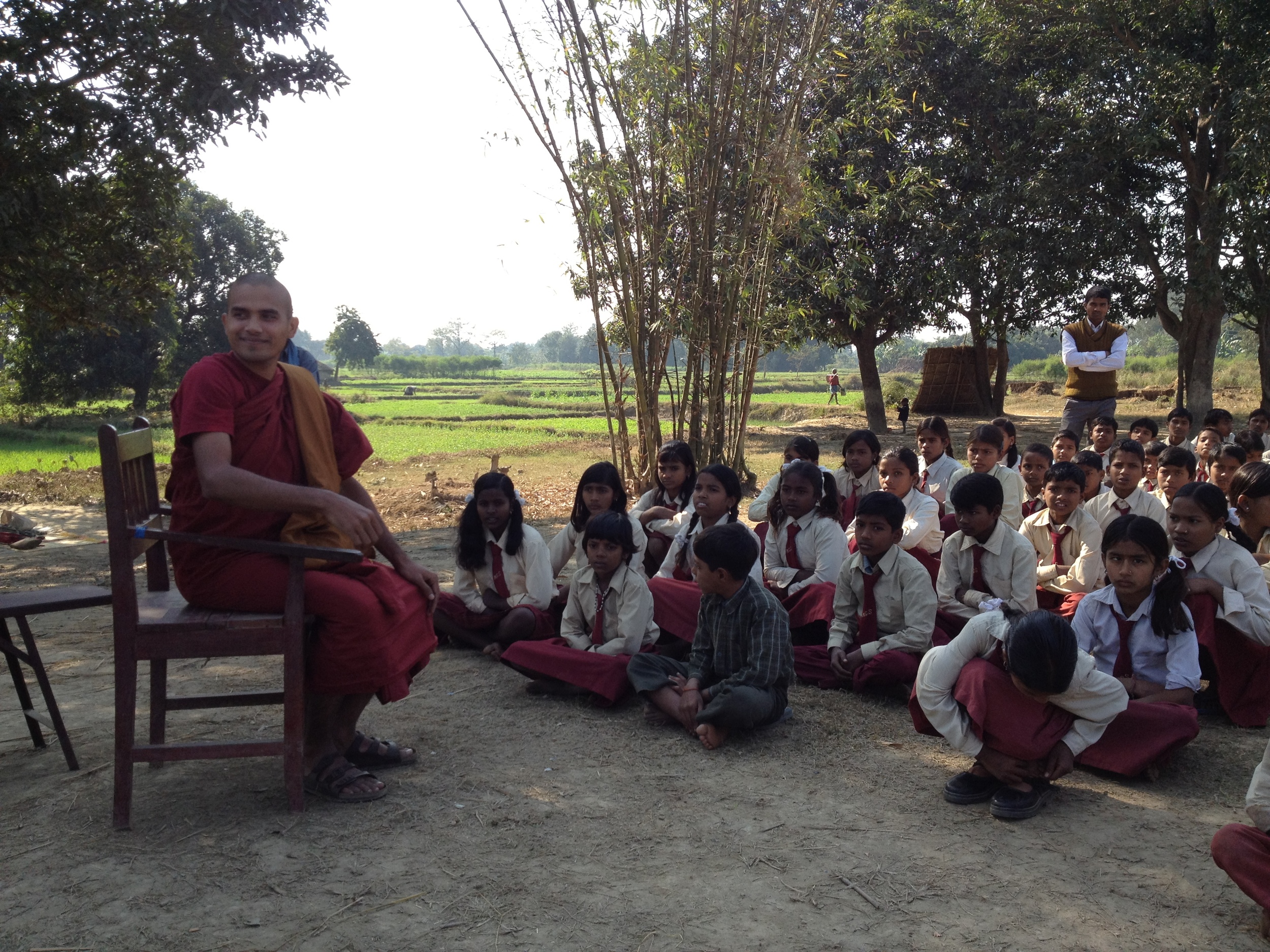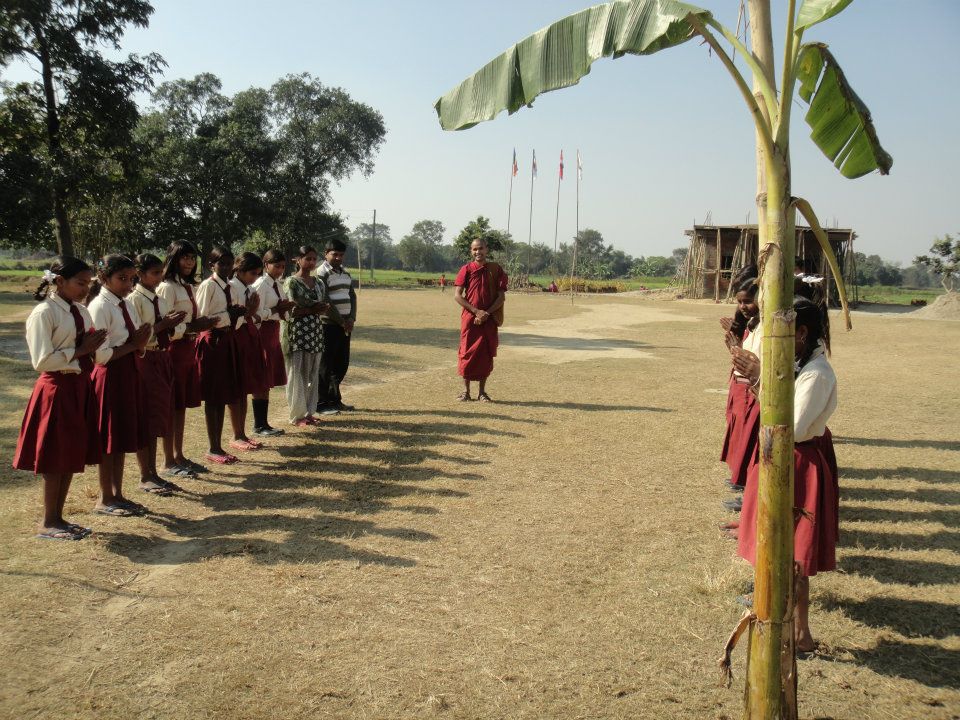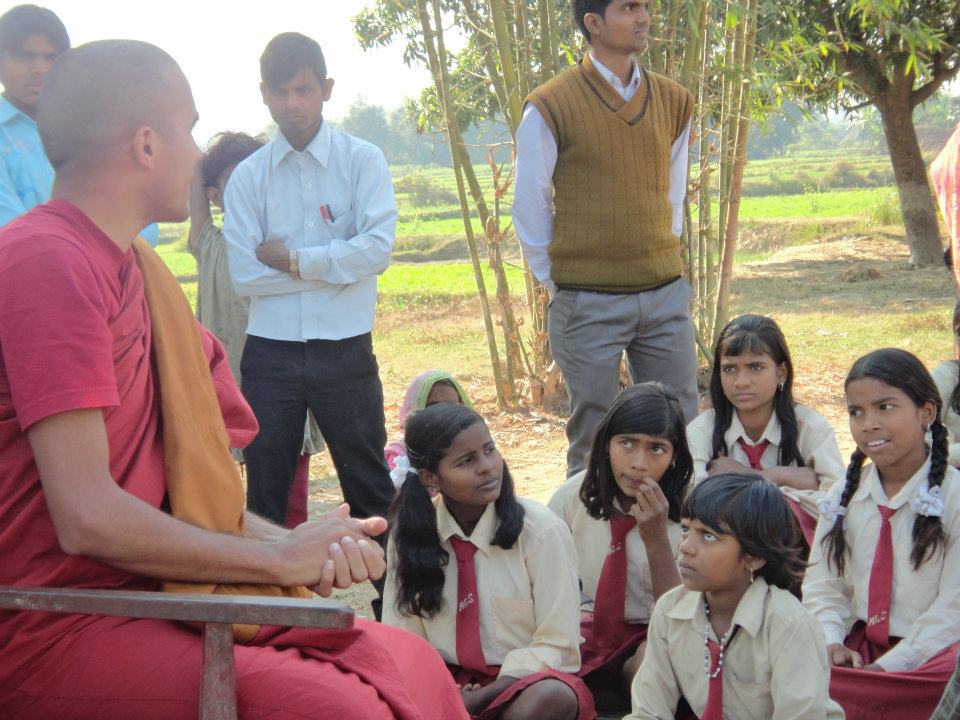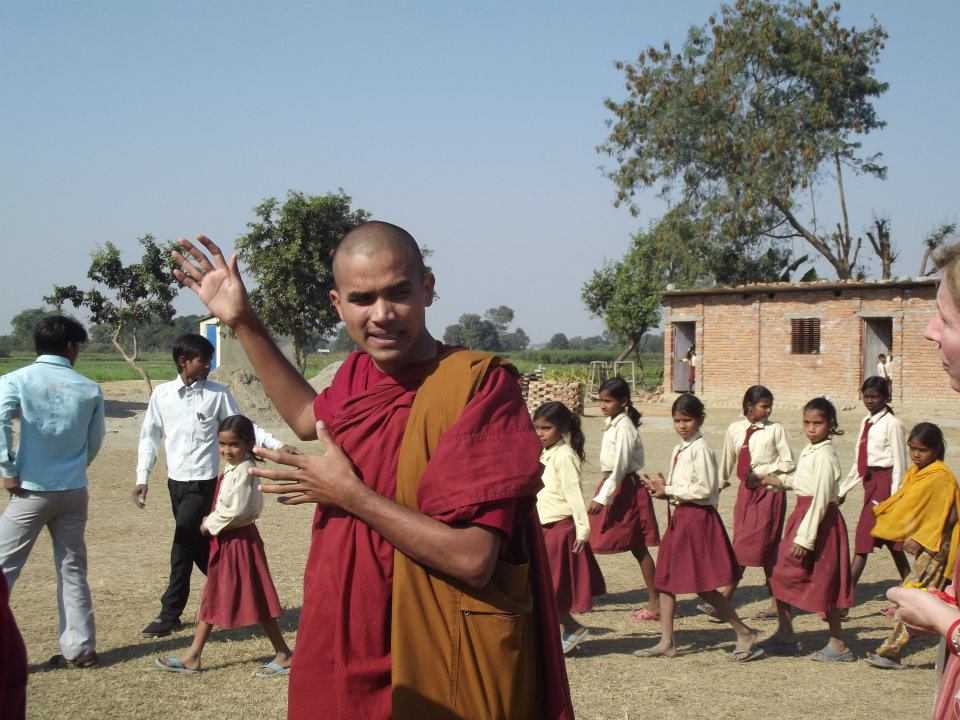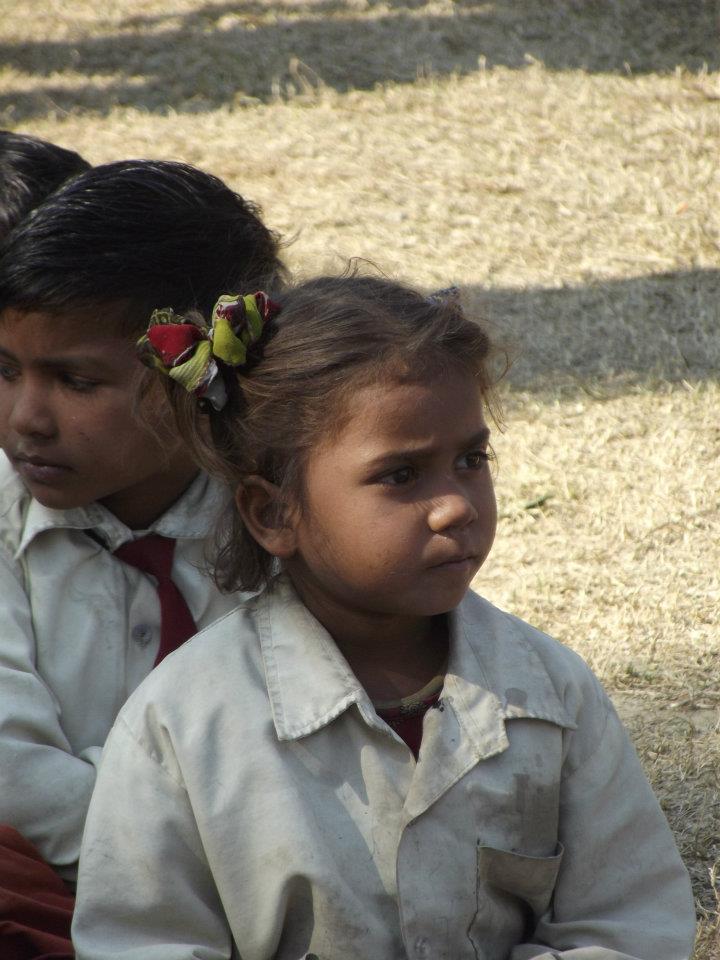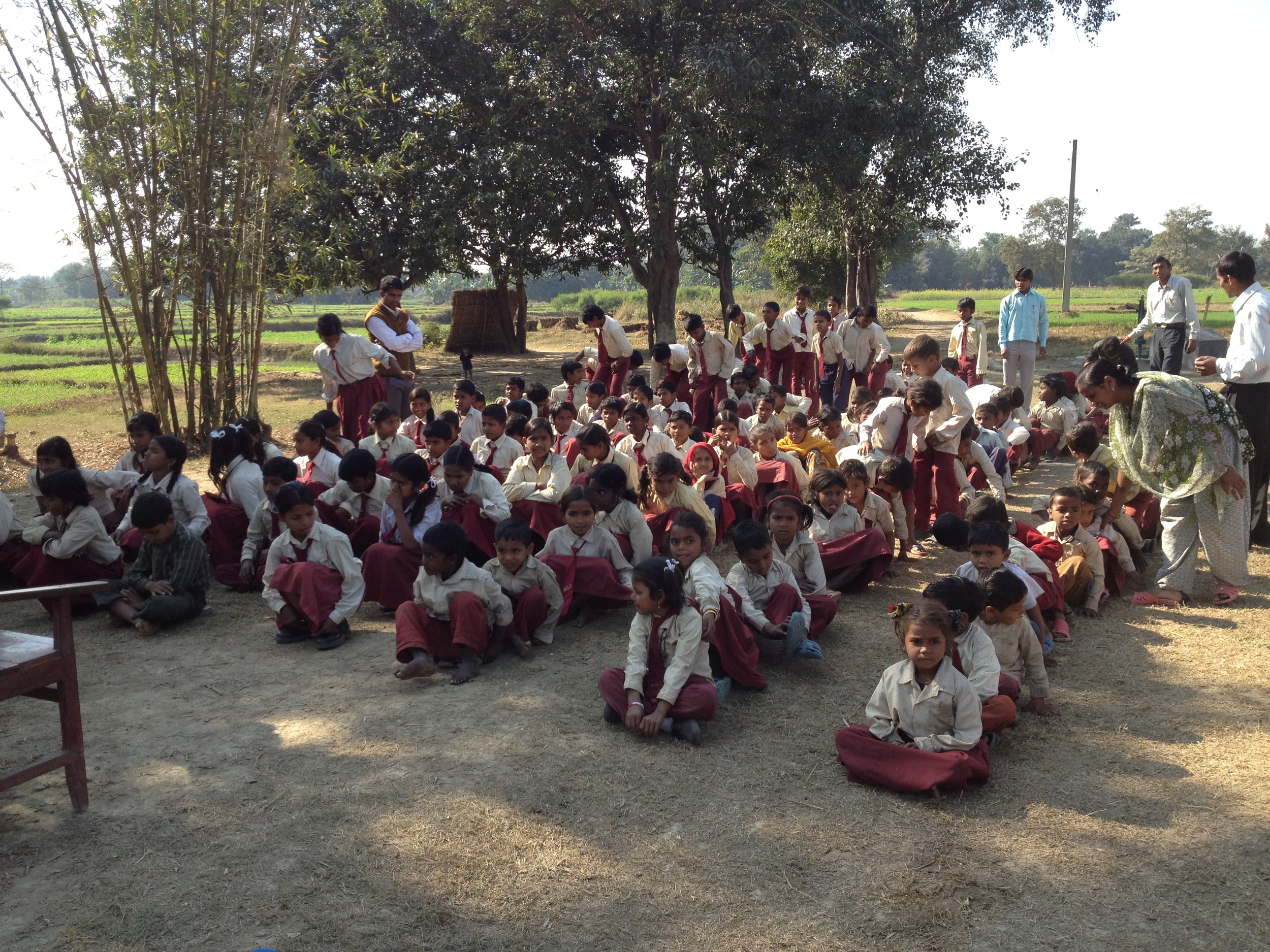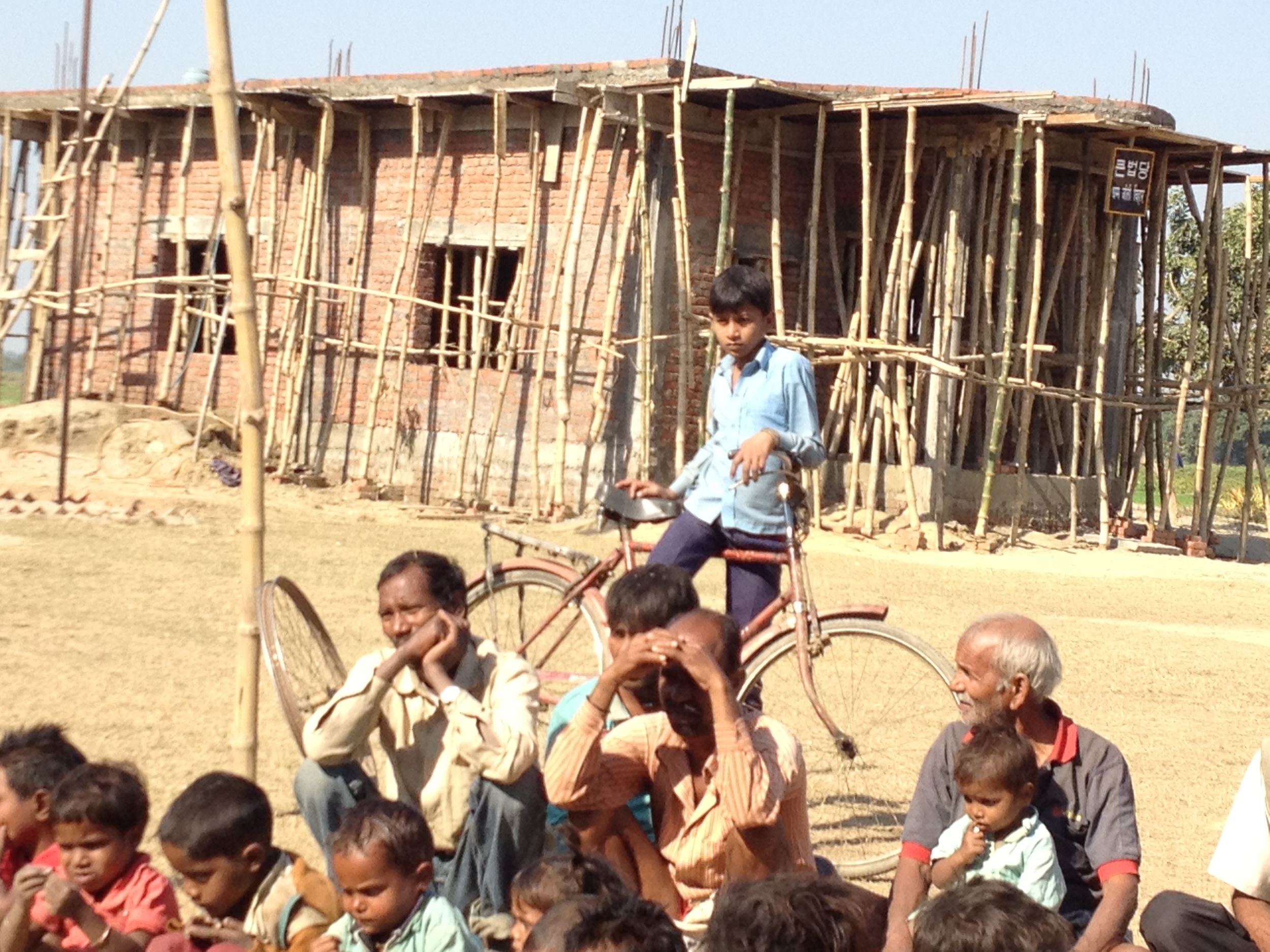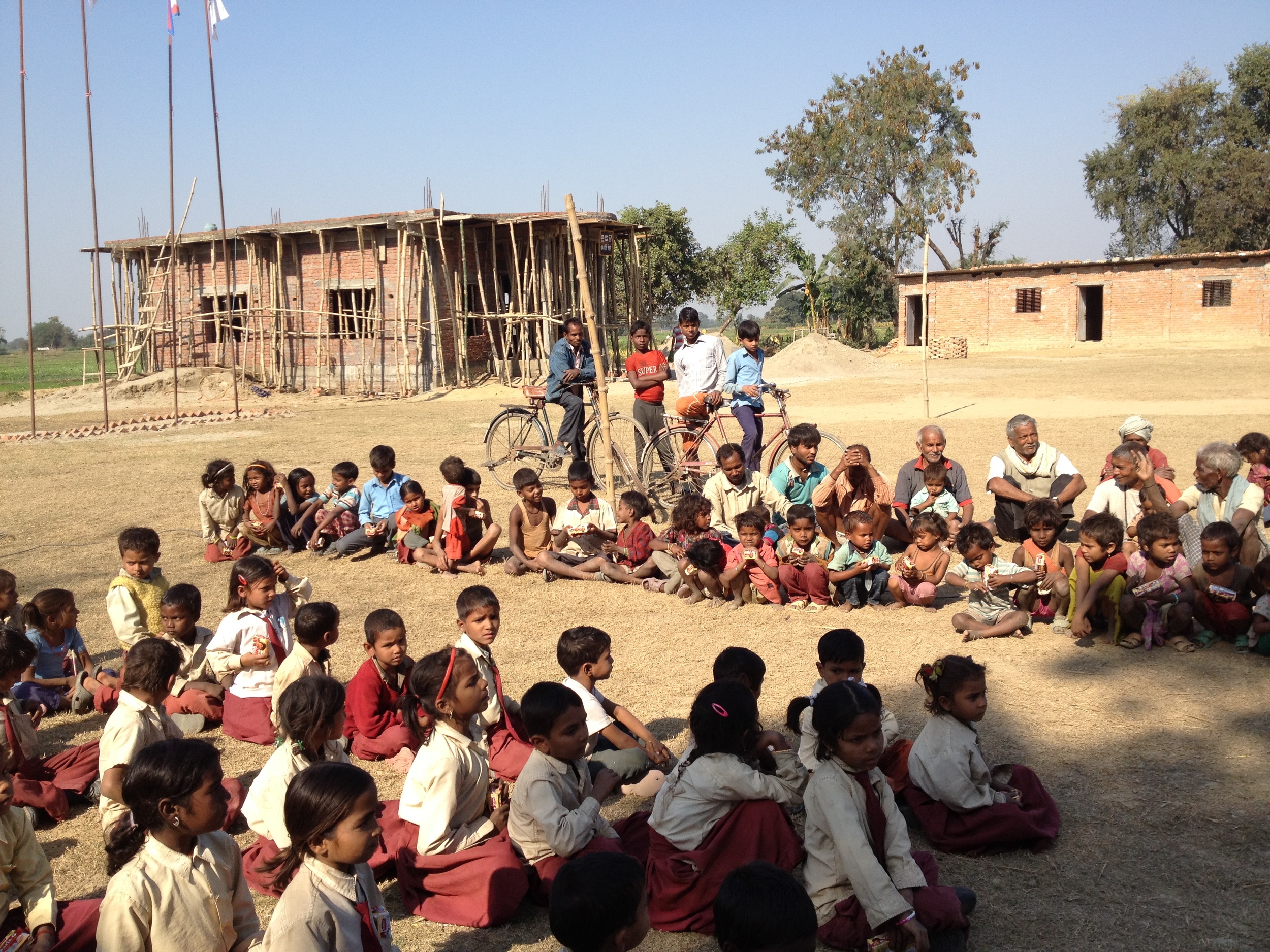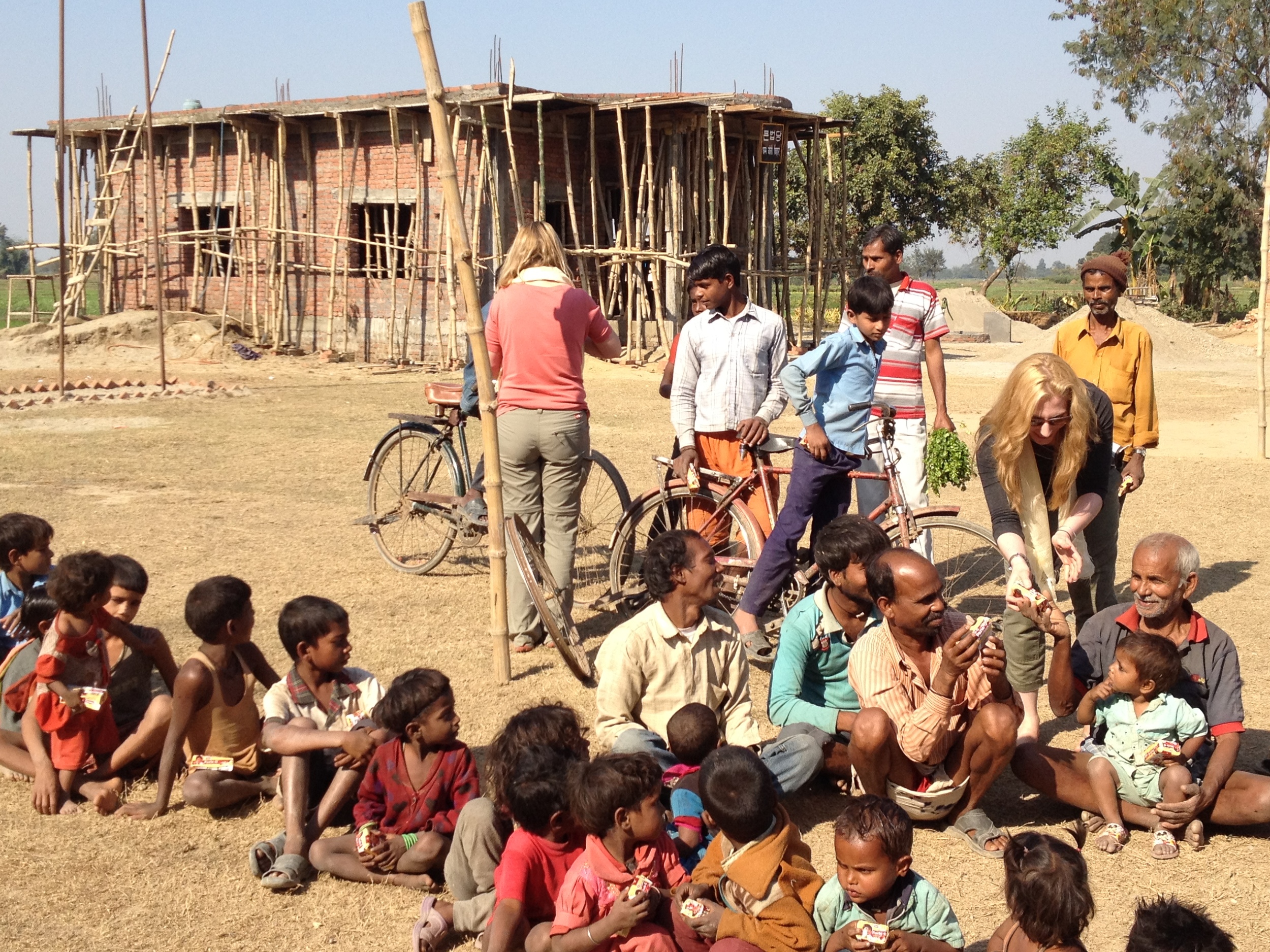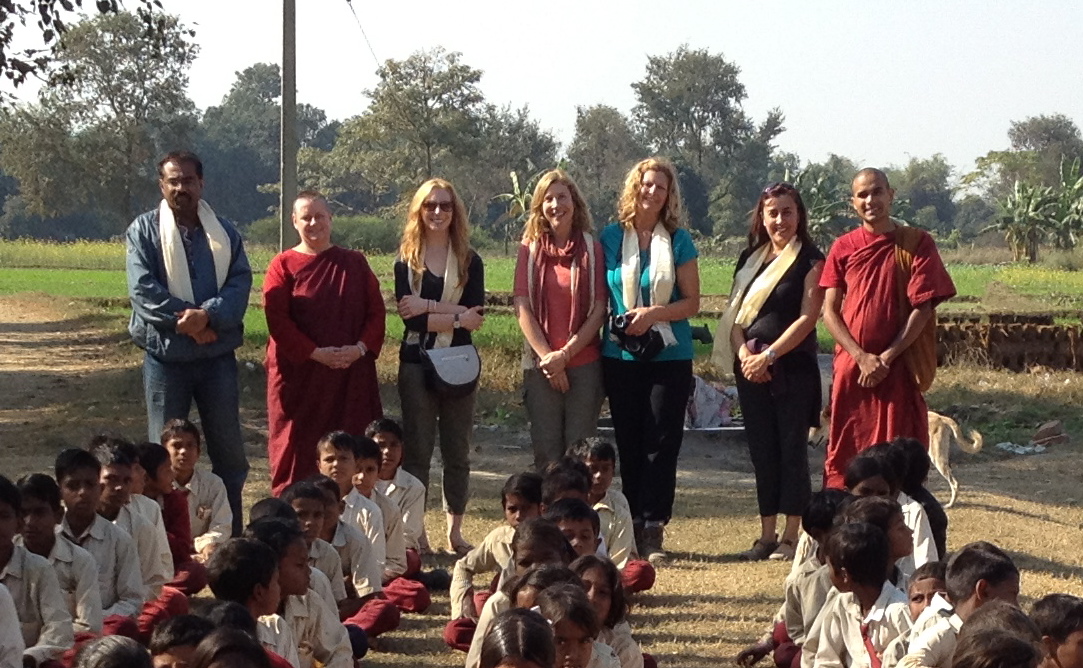Nepal
Earthquake Relief
If you would like further information and updates about our earthquake rebuilding projects, visit Global Karuna.
There was a devastating 7.9 Richter scale Earthquake in Nepal on April 25, 2015, and many tremors and aftershocks. Several mountain villages were completely devastated and cut off from assessment and aid for the time, including Mount Everest and base camp and other peaks where there have been avalanches after both the 7.9 and 6.9 quakes. Smaller villages outside of Kathmandu appear to be especially hard hit; government support is limited in some outlying areas to air drops of dry food and medicine, as landslides have cut off access to many villages. At this point, food and water are beginning to run out.
Inital Emergency Efforts
Ven. Metteyya and Metta Family of volunteers assembled a relief team to help organizations and teams on the ground in Kathmandu in th eimmediate aftermath of the disaster.
In Lumbini, our monks and nuns have been doing alms rounds (requesting donations) from the communities there, and our other Metta family volunteers worked with other monasteries and temples to collect blankets, medical and first aid supplies, food and water to transport up to Kathmandu for our Metta Family team in Kathmandu to direct the work.
On Thursday April 29, Ven. Metteyya headed back to his homeland to continue with Metta Family’s aid and with what funds we can raise will purchase food, water, blankets medicine etc. and send these truckloads to Kathmandu. Trevor from Calgary left for Nepal the following Friday to continue to help with these efforts. Ground crews in Lumbini and Katmandu have been organized to pack and distribute supplies. Anatta in the US, and CEBA in Canada, will continue outreach, gathering every available resource to keep funds moving directly to Kathmandu without any overhead costs.
In addition to the aid above, the strategy focused on assisting groups being left out large scale aid such as displaced families of victims at hospitals and aiding help desks set up at three local Katmandu hospitals. We also see that we can partner with a few monasteries and youth groups in Kathmandu to make outpost shelters. Additionally, youth groups will are assisting with the coordination of blood donations and assessing shelter needs for children. To see an inventory of goods distributed please see Global Karuna's one month review here: Global Karuna
Interconnections
Immediately after the earthquake, Anatta President, Cornelia Santschi, and Board Member, Susan Reichman, both working at the Ambulatory Care Center of Barnabas Health in New Jersey, were able to connect with Dr Ernani Sadural, head of Global Medicine at Barnabas Health. Newly appointed to the Barnabas position, Dr. Sadural had no contacts in Nepal, but was well versed in the utility of grassroots mobilization, as he is also part of a small medical relief organization:
Dr. Santschi and Dr. Sadural met one afternoon in the halls of Saint BarnabasMedical Center, and knew immediately they had a like-minded approach. Dr. Santschi connected Dr. Sadural with Venerable Metteyya in Kathmandu for a two day damage assessment visit. On his return, the team worked together to route Barnabas Health employee donations to LIG through Anatta to our grassroots local team, getting funds directly to where they were most useful.
Nepal
Background
Situated between the Tibetan plateau and the plains of the Indian subcontinent in South Asia, Nepal bridges cultures and geography in a unique melting pot of people, character and ancient history. In the north, the country traverses along the greatest heights of the Himalaya, home to eight of the world's 10 tallest mountains including the highest point on Earth, Mount Everest, called Sagarmatha in Nepali. This land of yaks, stupas and sherpas offers postcard beauty and some of the best trekking on earth.
Nepal is commonly divided into three geographic zones: the Mountain, Hill, and Terai regions. These ecological belts run east-west and are intersected by Nepal's major north-south flowing river systems. The Terai, southern lowland plains bordering India, are fed by three major Himalayan rivers: the Kosi, the Narayani, and the Karnali. This region has a subtropical to tropical climate. The Pahad, or Hill Region abuts the mountains and varies from subtropical climates below 4,000 feet to alpine above 12,000 feet. In the highest areas, snow occasionally falls in winter. The Parbat, or Mountain Region is part of the Great Himalayan Range which makes up the northern area of Nepal on the border with China.
Nepal has five climatic zones, broadly corresponding to the altitudes. There are five seasons: summer, monsoon, autumn, winter and spring. The Himalayan mountains block cold winds from Central Asia in the winter and form the northern boundary of the monsoon winds. In a land once thickly forested, deforestation is a major problem everywhere, with resulting erosion and degradation of ecosystems.
In most ways, the Nepali people are as diverse as their country's geography. The Nepalese are descendants of three major migrations from India, Tibet, North Burma, and Yunnan via Assam. Even though Indo-Nepalese migrants arrived more recently relative to the northern migrants, they dominate the country numerically, socially, politically, and economically. Despite the migration of a significant section of the population to the southern Terai plains in recent years, most Nepalis still live in the central highlands. The northern mountains are sparsely populated.
Eighty percent of people in Nepal practice the Hindu religion. Buddhism, though a minority faith in the country (10%), is linked historically with Nepal as the birthplace of the Buddha. Many Nepali do not distinguish between Hinduism and Buddhism and follow both religious traditions. There are 3 different Buddhist traditions represented: Himalayan Buddhism, Buddhism of Kathmandu Valley (mostly Mahayana and Vajrayana), and Theravada Buddhism.
Nepal's population has grown from 9 million people in 1950 to 29 million in 2010. Kathmandu is the nation's capital and largest metropolis with a population of around 800,00. It is a multilingual society whose diverse heritage evolved from four major language groups. The major languages of Nepal are Nepali (48.61%), Maithili (12.30%), Bhojpuri (7.53%), Tharu (5.86%), Tamang (5.19%), Newari/Nepal Bhasa (3.63%), Magar (3.39%), Awadhi (2.47%), Rai (2.79%), Limbu (1.47%), and Bajjika (1.05%).
Derived from Sanskrit, Nepali is the official national language and serves as the common mode of communication among Nepalis of different ethnolinguistic groups. Many Nepalis in government and business speak English as well. Dialects of Tibetan are spoken in the north in the higher Himalaya while local mostly unwritten dialects abound in the Terai and hills.
Clearly Nepal is an amazingly diverse country offering something for most any visitor. Due to its location, Nepal has long been a resting place for traders, travelers and pilgrims. A cultural melting pot, it has absorbed elements from its neighbors, yet retained an individual flavor. Many visitors are enchanted by the friendliness and openness of the Nepali people. One journey through this land is rarely enough to begin to understand its heritage, beauty, and diversity.
Nepal is also one of the poorest countries on earth. It is among the least developed countries in the world, with one-quarter to one half of its population living below the poverty line.
Agriculture is the mainstay of the economy, providing a livelihood for three-fourths of the population and accounting for about 40% of its GDP while services comprise 41% and industry 22%. Agricultural produce, mostly grown in the Terai region, includes tea, rice, corn, wheat, sugarcane, root crops, milk, and water buffalo meat. Industry mainly involves the processing of agricultural produce, including jute, sugarcane, tobacco, and grain.
Nepal's workforce of about 10 million suffers from a shortage of skilled labor. Although the diverse, exotic cultures and incredible geography represent potential for tourism, growth of the hospitality industry has been slowed by recent political events. The rate of unemployment and underemployment approaches half of the working-age population, so many Nepali citizens move to India in search of jobs.
In terms of infrastructure, Nepal remains isolated from the world's major land, air and sea transport routes. The hilly and mountainous terrain in the northern two-thirds of the country has made the building of roads and other infrastructure difficult and expensive. There is only one reliable road route from India to the Kathmandu Valley. The only practical seaport of entry for goods bound for Kathmandu is Calcutta, India. Internally, poor development of the road system makes larger-scale distribution difficult and impractical.
There is less than one landline telephone per 19 people. Service is inadequate nationwide with concentration in cities and district headquarters. Mobile phone service offers greater accessibility and affordability, with more-or -less uninterrupted internet service increasingly available.
HEALTH CARE
Health in Nepal is poor by international standards, especially in rural areas with disease prevalence higher than in other South Asian countries. There is a high risk of waterborne illnesses such as bacterial diarrhea, hepatitis A, and typhoid fever. Leading diseases and illnesses also include goiter, intestinal parasites, leprosy and tuberculosis. Nepal has high rates of child malnutrition (72 percent in 2001) and under-five mortality (91.2 deaths per 1,000 live births in 2001).
Health-care facilities, hygiene, nutrition and sanitation are generally poor and beyond the means of most, particularly in rural areas. In the early 2000s, there were only 21 physicians per 100,000 people. Provision of health services is constrained by low government spending, rugged terrain, and lack of health education, lowering the demand for health services. Most hospitals are in urban areas, and rural health facilities often lack adequate funding, trained staff, and medicines. As a result, health clinics and hospitals generally are used only for persistent and serious illnesses. There have been government efforts to decentralizing health services to villages, but the program has not resulted in notable public health improvements.
EDUCATION
Education in Nepal is structured into primary school education (grades 1–5) and higher secondary levels grades 6–8 and 9–10 respectively.
Officially, there are two types of schools in the country: community and institutional. Community schools receive regular government grants while institutional schools are funded by the school itself, or other non-governmental sources. Institutional schools are usually organized as a non-profit or a company. A third type of school is run by the local people motivated to have a school in their locality. Managed by the people, they do not receive government grants and most do not have sustainable financial support.
Education management, quality, relevance, access and resources are therefore some of the critical issues of education in Nepal. Societal disparities based on gender, ethnicity, location, and economic class remain a hindrance to educational equality. These problems have made the goal of education for all a challenge for the country. Currently about two thirds of female adults and one third of male adults are illiterate. Countrywide, average education is 10 years for males and 8 years for females. In rural areas this can be far lower.
Nepal has seen rapid political changes during the last two decades. Until 1990, Nepal was a monarchy under the executive control of the king. Faced with a Communist movement against the absolute monarchy, in 1990, King Birendra, agreed to large-scale political reforms by creating a parliamentary monarchy with the king as the head of state and a prime minister as the head of government. Even with some more recent evidence of legal and social change, Nepal has remained one of the world's poorest countries, with seven million Nepalis lacking adequate food or basic health and education. In rural areas, the majority of Nepalis continue to live simply as they always have, but unless real social change, improvements in education, and economic development becomes evident in the countryside, the frustrations that fueled Nepal's recent political unrest are in danger of remaining unresolved.
Nepal Earthquake relief and rebuilding Support is still badly needed. You can help through Anatta's YouCaring page, which you can find here.
Died: 8800+ Injured: 23,0000+ Homes destroyed: 600,000
How your contributions so far have helped:
-40 helicopter relief and rescue missions
-Numerous truck relief and rescue missions
-Medicine and Medical aid
-Evacuated and relocated 39 nuns from Bigu Dolkha
-Aid to 180 villages: 65 tons of food; 850 tarps and tents; 100 sleeping mats; 400 blankets; 1300 zinc/tin sheets; 200 kg of nails; 85 solar lights; 40 water filters and more.
After the earthquakes Nepal must now be prepared for secondary disasters like rockfalls, slope failures, landslides, glacial lake outburst floods and avalanches." The greatest risks now are landslides of which 3000 have been identified and that could grow in size and destructive capacity.
Your help is still greatly needed and appreciated.
The Venerable Metteyya describes his impressions immediately following the April 2015 earthquake and the grassroots efforts to take action.
Ongoing Rebuilding Efforts
After week one, there was a shift in the supply needs to tarps and building supplies to insure shelter in the fast approaching monsoon.
In the second week of operations there was a gradual shift from a mass distribution to all affected areas to a selective distribution to places outside the reach and interest of other aid organizations, and a gradual shift from indirect toward direct supply.
In weeks three and four, Venerable Metteyya and the Global Karuna team made best use of local connections and managed to find access to near untouchable helicopter resources. They took to the air to provide relief in the most remote areas of the country by direct delivery. Through non-stop effort the team completed a total of 12 helicopter relief and rescue missions.
As time passed, relief efforts became relocation and rebuilding efforts for some special populations in some very hard to reach locations.
Please visit our partner Global Karuna for more information on the early weekly progress reports, as well as the relocation and current rebuilding efforts underway.
Projects
Kunde Hospital
Background
In April of 2006, Conni embarked on her first trek in the Everest region of Nepal. During this time she visited and toured the Kunde Hospital, run by Dr. Kami Temba Sherpa, the uncle of her trek leader, Lhakpa Norbu Sherpa. The hospital is about 20km from the base of Mt. Everest in northeastern Nepal. This tiny hospital is funded by the Himalayan Trust, set up in 1960 by Sir Edmund Hilary. The facility consists of four beds for short term outpatient care and a few more for longer term stays. It serves up to 10,000 Sherpa people living in the region. The medicines in the little pharmacy are often replenished by the trekkers passing through the area on the way to Everest base camp or Tengboche Monastery.
After obtaining a wish list of medical supplies, and communicating with Dr. Sherpa further by email, Conni was determined to bring some equipment back on her next trip. Finally in April of 2008, she was able to make good on her promise. Anatta donated the oxygen saturation machine, carried by Conni on her next trekking trip, to the Kunde hospital. This machine was one of the items Dr. Sherpa had requested to help monitor blood oxygen levels for patients at high altitude.
Kailash Hostel/Himalayan Youth Foundation
Background
The Himalayan Children's Foundation is a non-profit organization established in 2002. The hostel is supervised by HYF Board member Steve Webster, a friend Conni met while trekking in Nepal in April 2008. The Kalish Hostel was completed in October of 2007 and opened in January of 2009. Currently 86 Nepali children reside there; capacity is 100 children. Each child is fully sponsored with all medical and primary school educational expenses paid. The Foundation utilizes a local network to locate the poorest children in the most remote areas who would otherwise lack access to an education. The hostel is funded entirely by donation.
In April 2008, Conni visited this impressive hostel and discussed future plans with Steve. One of the next phases of the project will be to address the needs of the children as they age out of the primary school system. Anatta hopes to continue dialogue with Steve and HYF to discuss the possibility of scholarships for vocational training or higher education.
Sakyadhita (Peace Grove) Nunnery and Girls College
In December of 2011, Conni led the first Anatta trip to Lumbini, Nepal. Here Anatta teamed up with the Canadian Engaged Buddhism Association (CEBA) to begin a series of projects with Venerables Metteyya and Bodhi at the Peace Grove (Sakyadhita) Nunnery, the Metta Schools, and the UNESCO Lumbini World Heritage Site.
Anatta Library
One of the primary goals of Anatta's visit was to participate in the groundbreaking ceremony for the Anatta Library on the grounds of the Girls College, currently under construction next to the nunnery. The event was spectacularly orchestrated; most of the local village, many of the Metta School children, and all of the nuns with their families were in attendance for the special blessing ceremony. The occasion was cause for celebration and optimism. It was heartwarming to feel the enthusiasm and joy of the entire assembly. The library will be the first of its kind in the area.
We will certainly return next year for the grand opening! In the interim, there is much to accomplish besides construction. While the structural details have been evaluated and funded, we will need to continue fundraising efforts to purchase more books and audio/visual resources in English as well as Nepali or Hindi.
The Metta School Complex
As you probably know, our local contact in Lumbini is the Venerable Metteyya, a young Nepali Buddhist monk who has been a humanitarian all his life. He began the first Metta School in 2003, when he was just a teenager himself, to improve educational opportunities in his hometown of Lumbini. The first classroom was outdoors, under a tree. The current school complex now serves over 800 children!
We were fortunate to visit not only the main Metta Gurkhul School, but also a satellite school in a remote rural village, now functioning in the Metta System. At each site we were welcomed as honored guests and invited to visit the children at work in their classrooms. We met with the school board, talked with the children, and watched new classroom buildings practically growing under our feet. The energy was positive and forward-thinking. The success and popularity of the school was evidenced by the rapid growth that has taken place since its inception.
At the newer satellite school, a group of villagers watched the uniformed school children lining up to greet us. Many of them had small children in tow, perhaps waiting for their chance to participate as well. The education is free to the families, but the class space and availability of teaching staff to accommodate everyone is limited.
We were encouraged at the efficiency and productivity of the schools, and were delighted at the positive reports from the community. As Anatta, we intend to do our best to help support the quality of educational change happening here, and learn from their success to pay it forward in other venues.
